2.6 Cell division, cell diversity and cellular organisation
1/143
There's no tags or description
Looks like no tags are added yet.
Name | Mastery | Learn | Test | Matching | Spaced |
|---|
No study sessions yet.
144 Terms
What are the 2 main phases of the cell cycle?
- Interphase
- Mitotic Phase
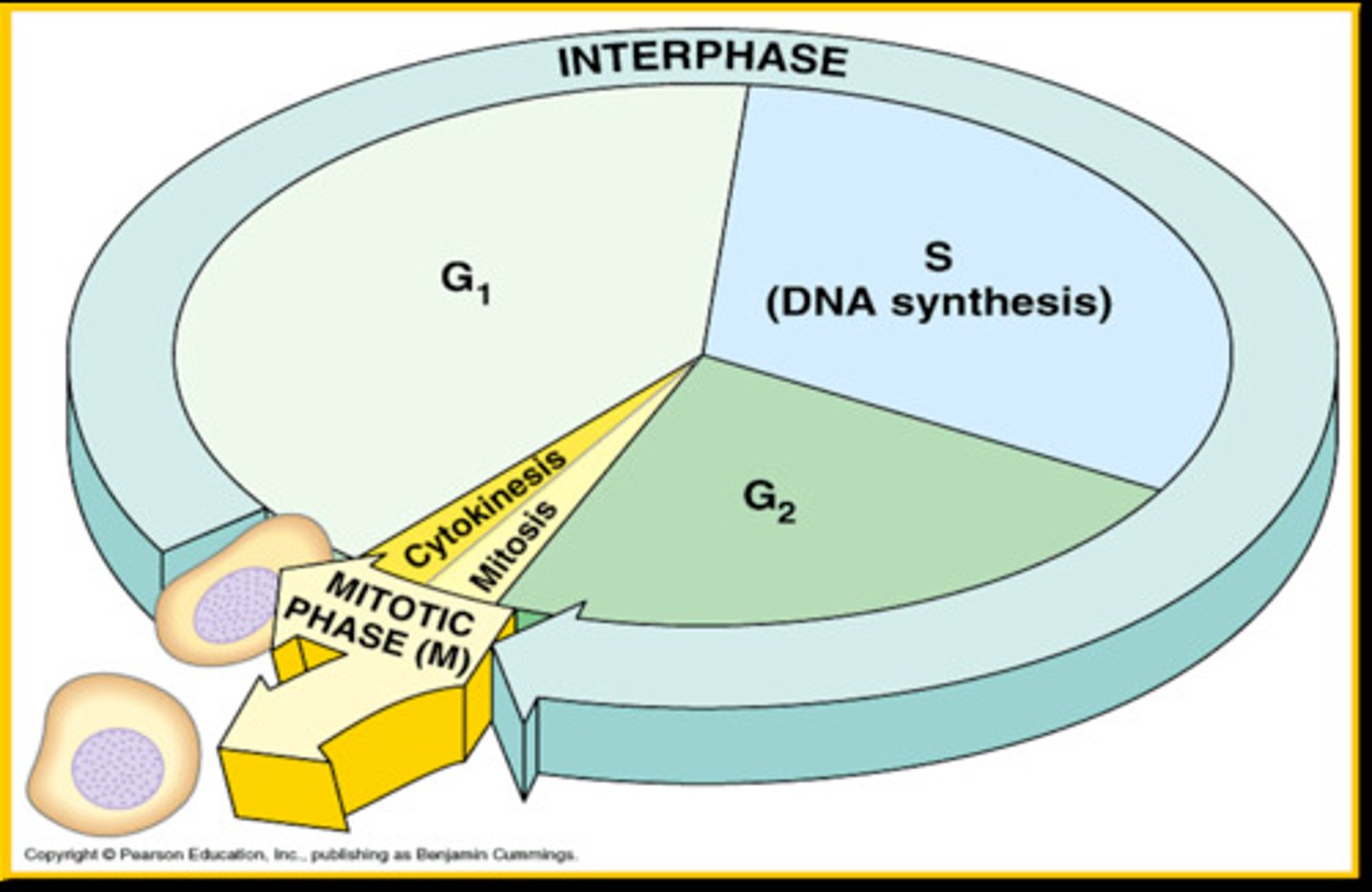
What are the three stages of interphase?
G1
S
G2
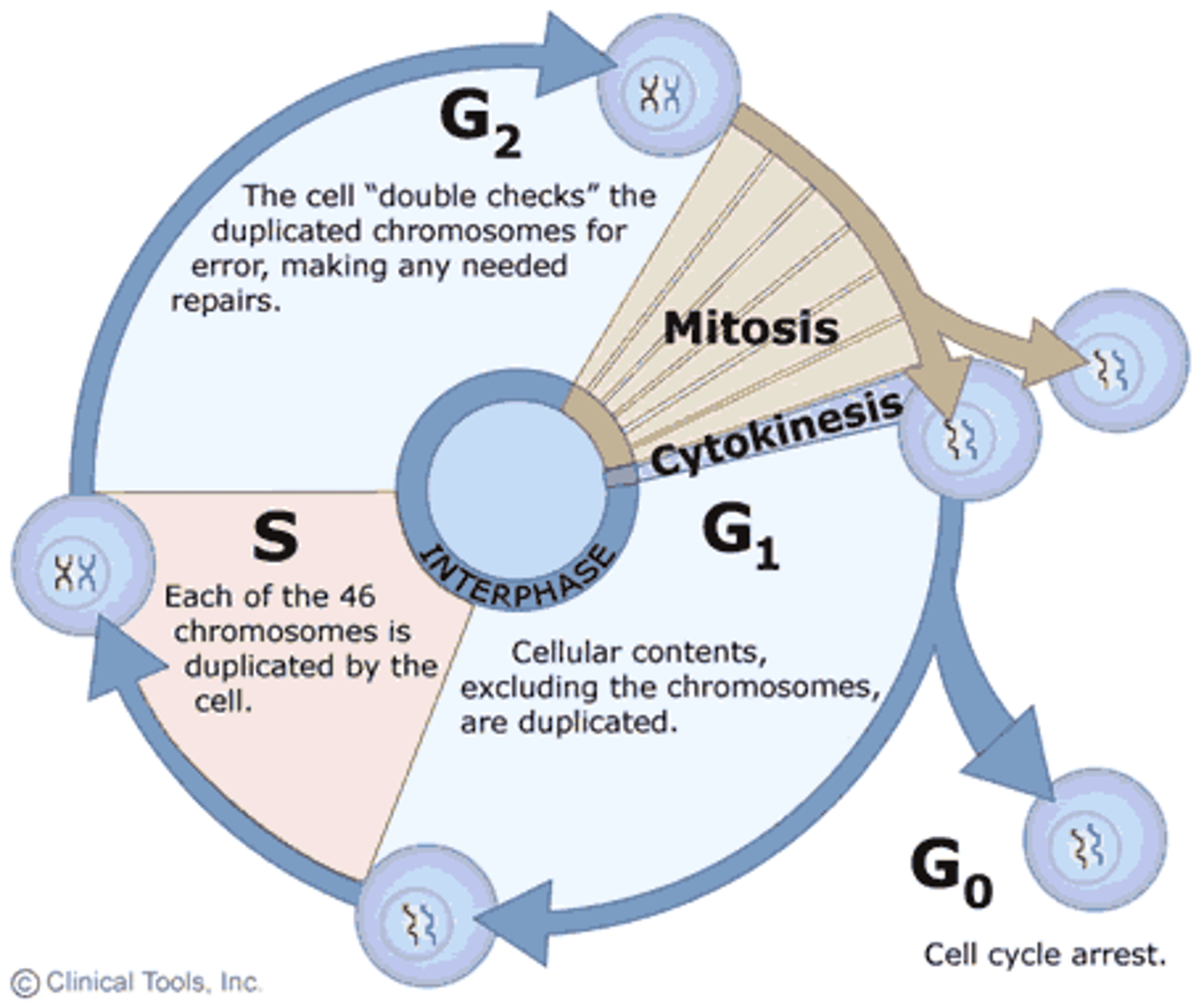
What is G1?
First growth phase
What happens in G1?
- Growth of cell
- Growth of organelles
- Increase in number of organelles
- Protein synthesis
What is S?
Synthesis phase
What happens in S phase?
- DNA replication
Why is it essential that DNA replication occurs?
So that the daughter cells have identical DNA and a full copy of DNA
What is G2?
Second growth phase
Short gap before mitosis
What happens in G2?
- Growth of cell
- Growth of organelles
- Increase in number of organelles
- Protein synthesis
- Spindle can begin to form
Cell Cycle Checkpoints
G₀ checkpoint
G₁ checkpoint
S checkpoint
G₂ checkpoint
Spindle assembly (metaphase) checkpoint
What do checkpoints in the Cell Cycle do?
They monitor and verify whether the processes at each phase of the cell cycle have been accurately completed before the cell is allowed to progress into the next phase.
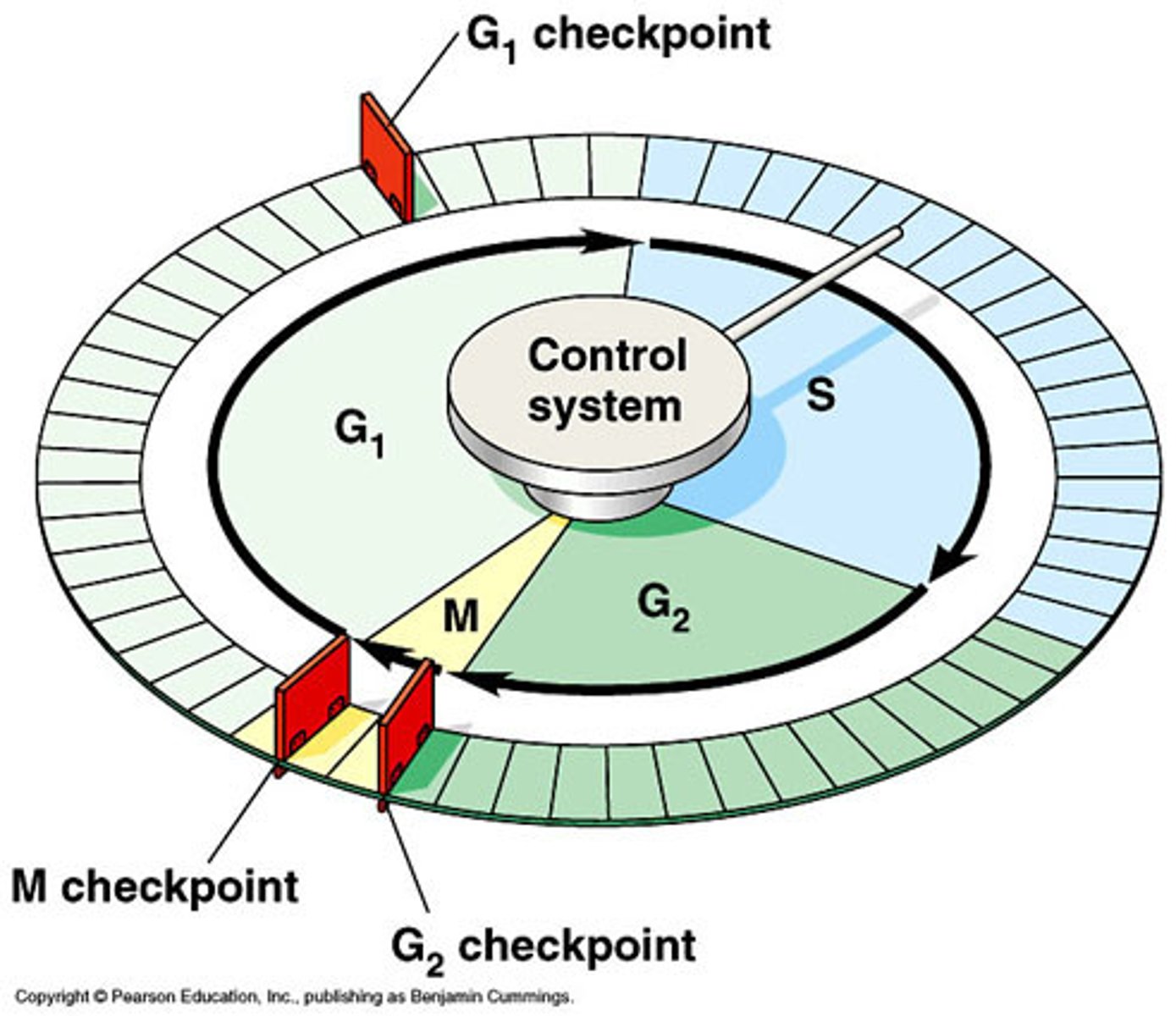
G₀ Checkpoint
The cell leaves the cycle either temporarily or permanently
Why do cells enter the G₀ checkpoint?
1. The cell has fully differentiated, e.g. a red blood cell
2. The DNA of the cell is damaged, and the cell will try to repair the DNA
When does the G₁ checkpoint occur?
Between G1 and S phases
What requirements does the G₁ Checkpoint check for?
- Cell size
- Nutrients
- Growth factors
- DNA damage
- Chromosome damage
If all requirements are met then DNA replication can begin. If not, the cell enters G₀
S Checkpoint
If DNA has been replicated correctly
What does G2 Checkpoint check for?
This checkpoint checks for a mutation in the DNA.
If there is a mutation in DNA, daughter cells might not receive identical genetic information and proteins might not function, which will lead to the cell entering G₀
- Cell size
- DNA replication
- DNA damage
Spindle assembly/metaphase checkpoint
- It checks that the chromosomes are correctly attached to the spindle fibres prior to anaphase, and are aligned correctly
- Metaphase cannot proceed until chromosomes have attached to spindles and are align correctly
Identify the stage of the cell cycle during which a cell would be producing the most DNA molecules and explain why.
- S phase
- Because the S phase is when DNA is synthesised (a.k.a replicated in the nucleus)
Identify the stage of the cell cycle during which a cell would be producing the most mRNA molecules and explain why.
- G1 phase
- Because G1 is when protein synthesis is occurring
- and the production of mRNA occurs during transcription (a.k.a the first part of protein synthesis).
What are the two stages of the Mitotic phase?
Mitosis
Cytokinesis
What happens in mitosis?
The nucleus divides.
What happens in cytokinesis?
The cytoplasm divides and two cells are produced.
Why is brain damage dangerous?
The cells are differentiated, so will not be able to replace themselves.
Why is it important that the DNA within new cells are accurate?
The new cells will carry out their function accurately
Why is it important that cells only divide when it has grown to the right size, has error free replicated DNA, and their chromosomes are in their correct positions during mitosis?
It ensures fidelity of cell division, that 2 identical daughter cells will be created from the parent cell.
What’s the significance of mitosis in life cycles?
Asexual reproduction
Repair of damaged tissue/cells
Growth of an organism
Chromosomes
These are both chromosomes. The only difference is that one has 2 sister chromatids.
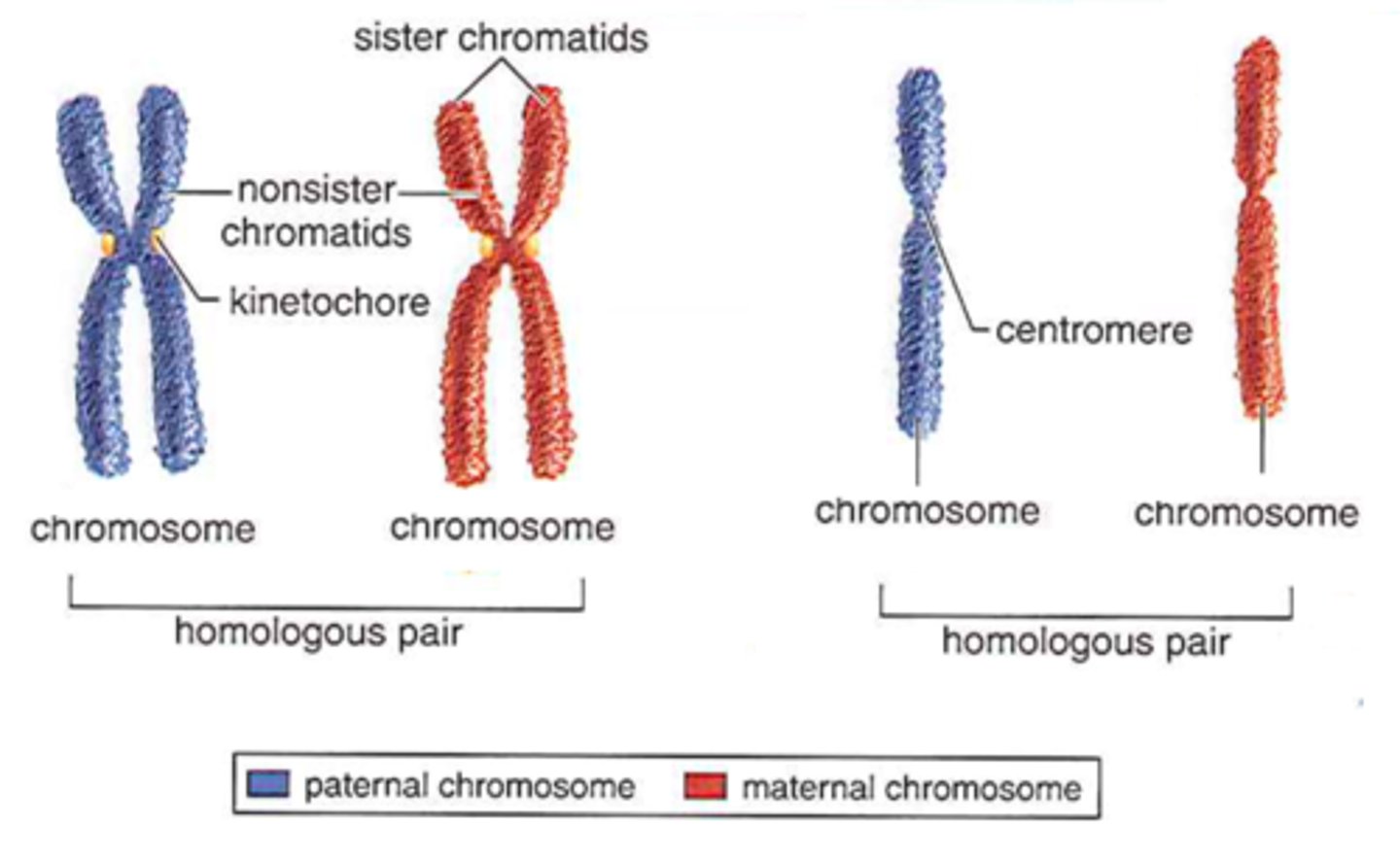
What are chromatids?
A chromatid is one of the two identical halves of a chromosome that has been replicated in preparation for cell division.
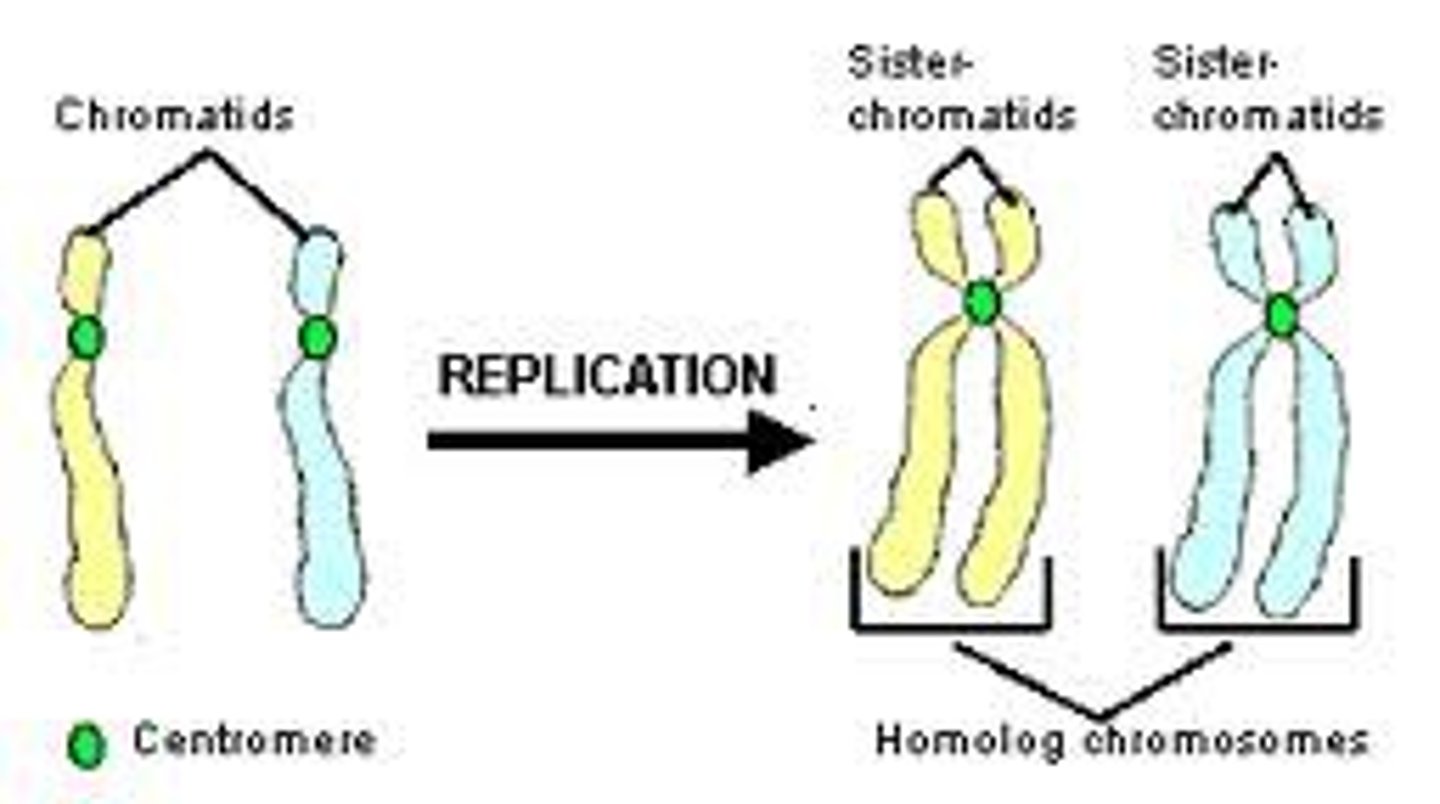
What are centromeres?
The part of a chromosome that links sister chromatids
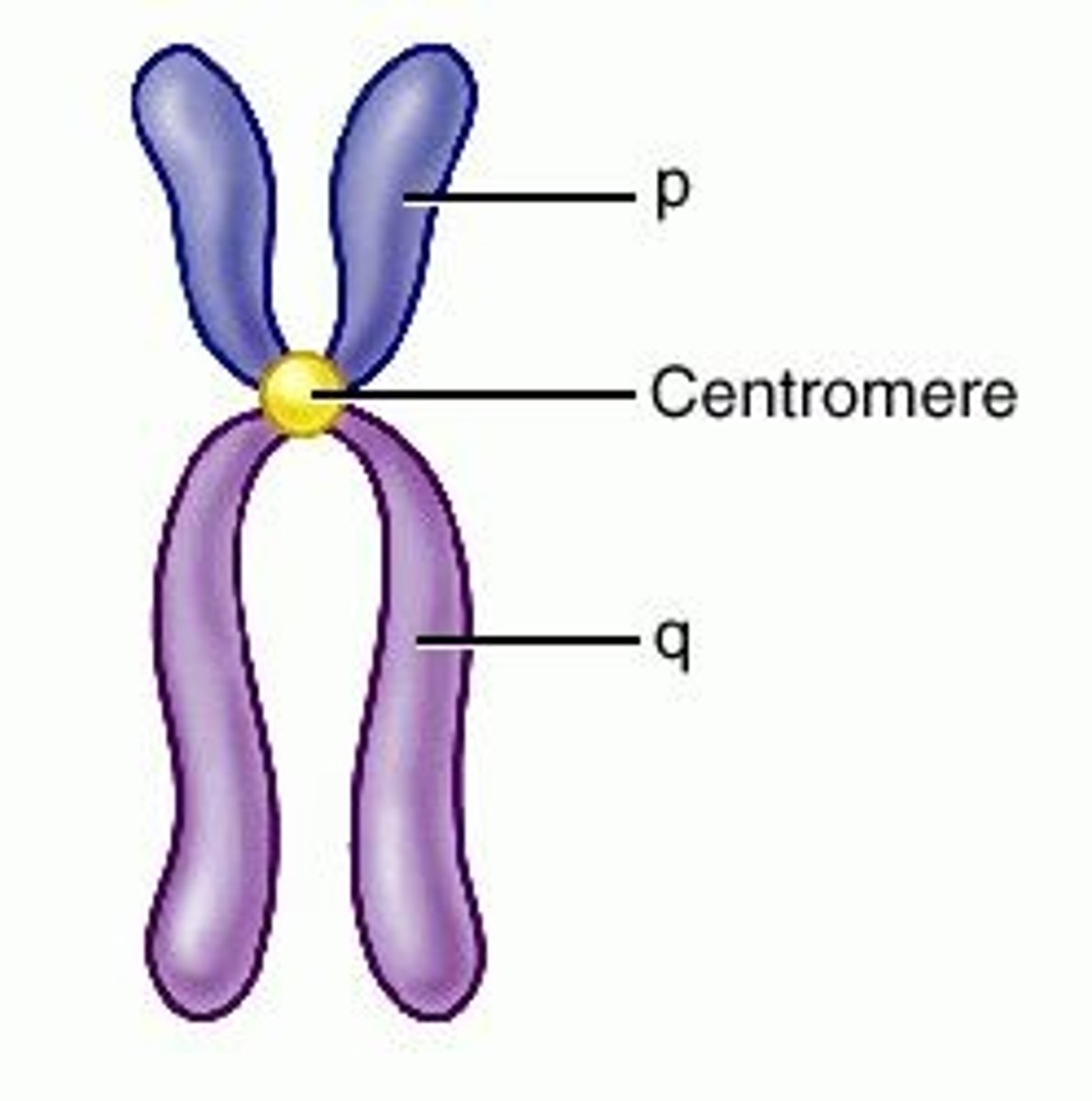
What do spindle fibres do?
They are responsible for the segregation of sister chromatids and movement of chromosomes during mitotic and meiotic division.
What are centrioles/centrosomes?
- Centrioles are paired barrel-shaped organelles
- They play a role in organising microtubules (the cell's skeletal system)
- They help determine the locations of the nucleus and other organelles within the cell.
1) Prophase
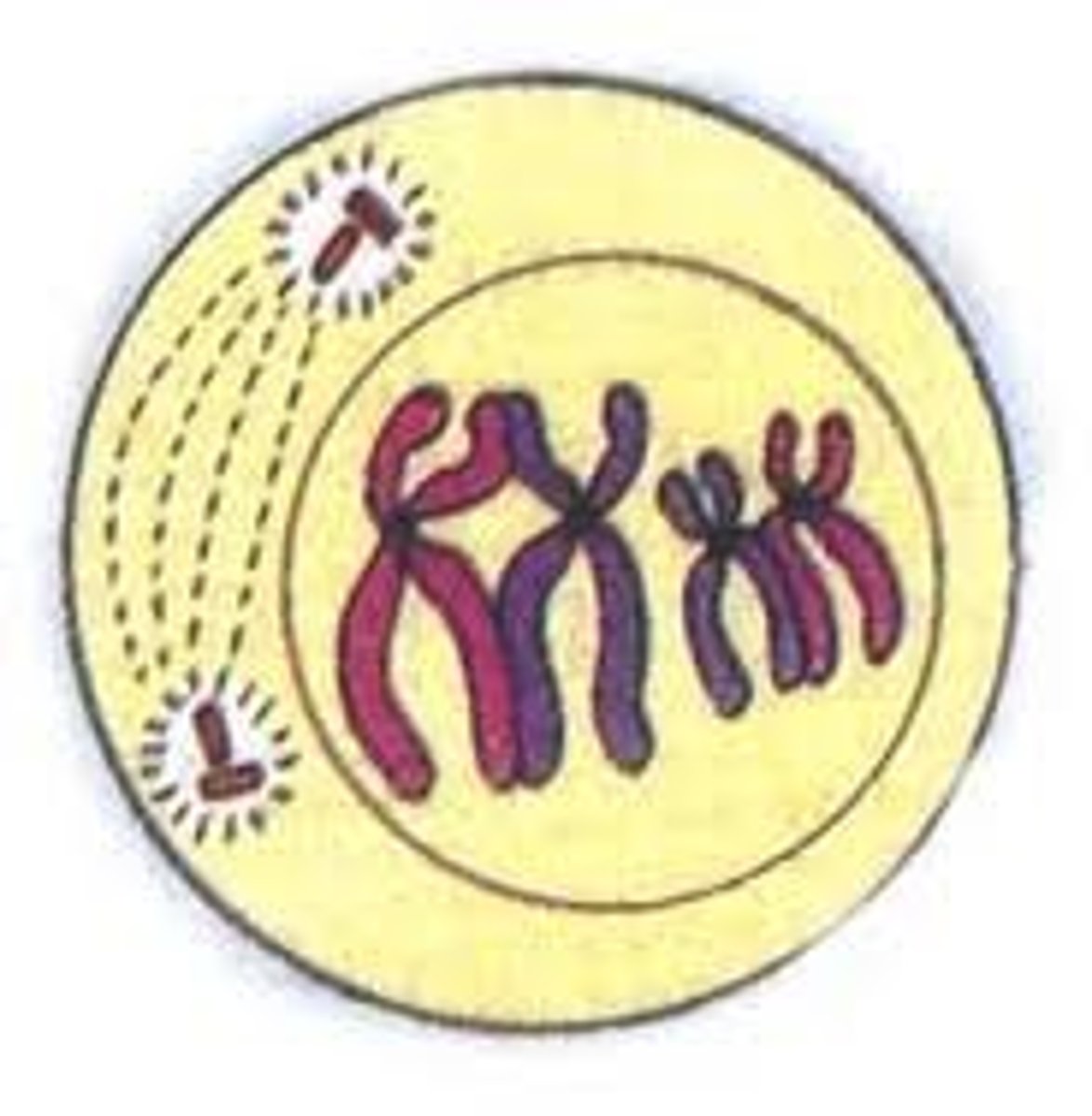
What happens in prophase?
- Nuclear envelope breaks down
- Chromosomes condense
- Spindle fibres attach to the centromere on the chromosome
What does prophase look like under a microscope?
Chromosomes condense and are visible when stained
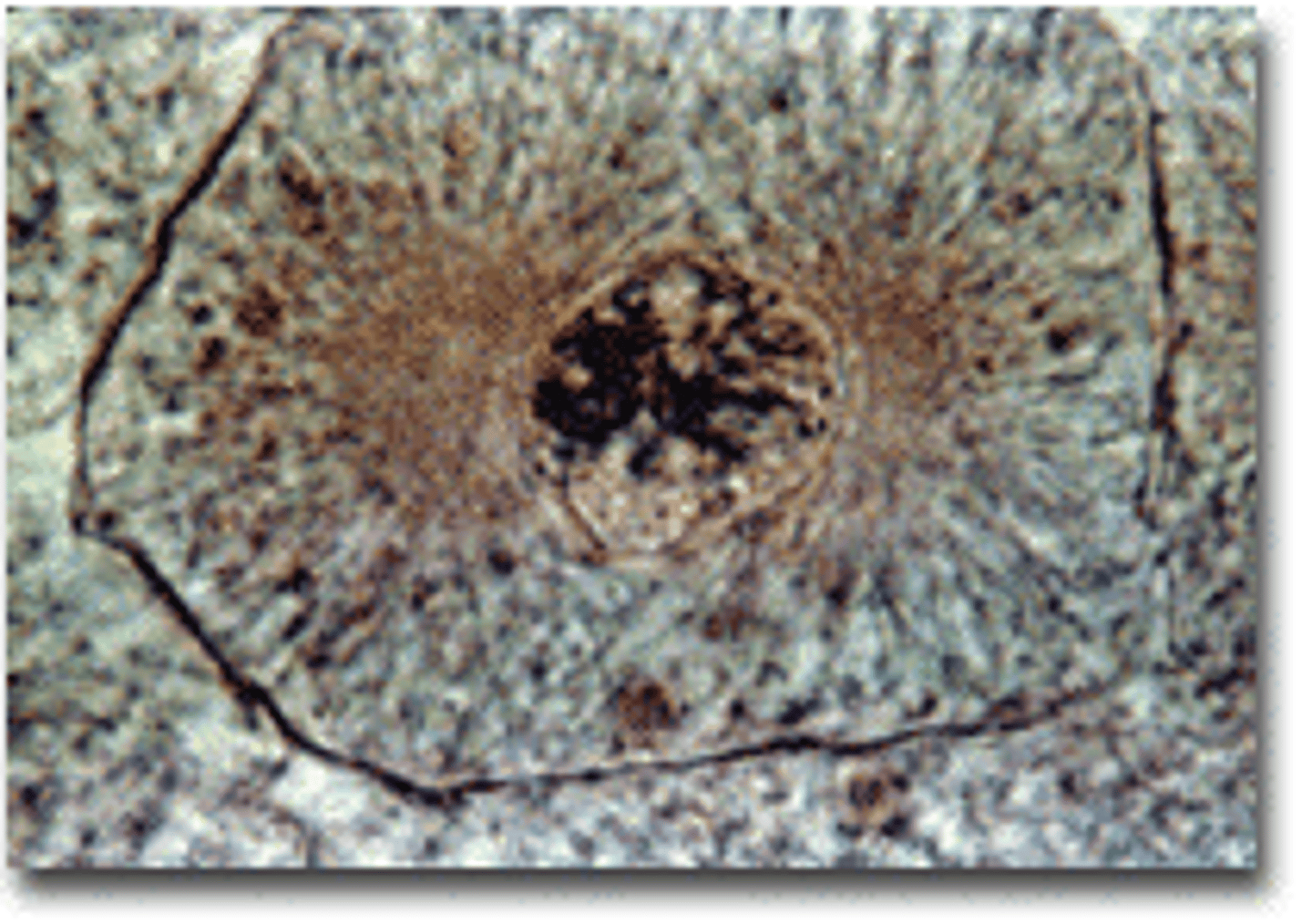
2) Metaphase
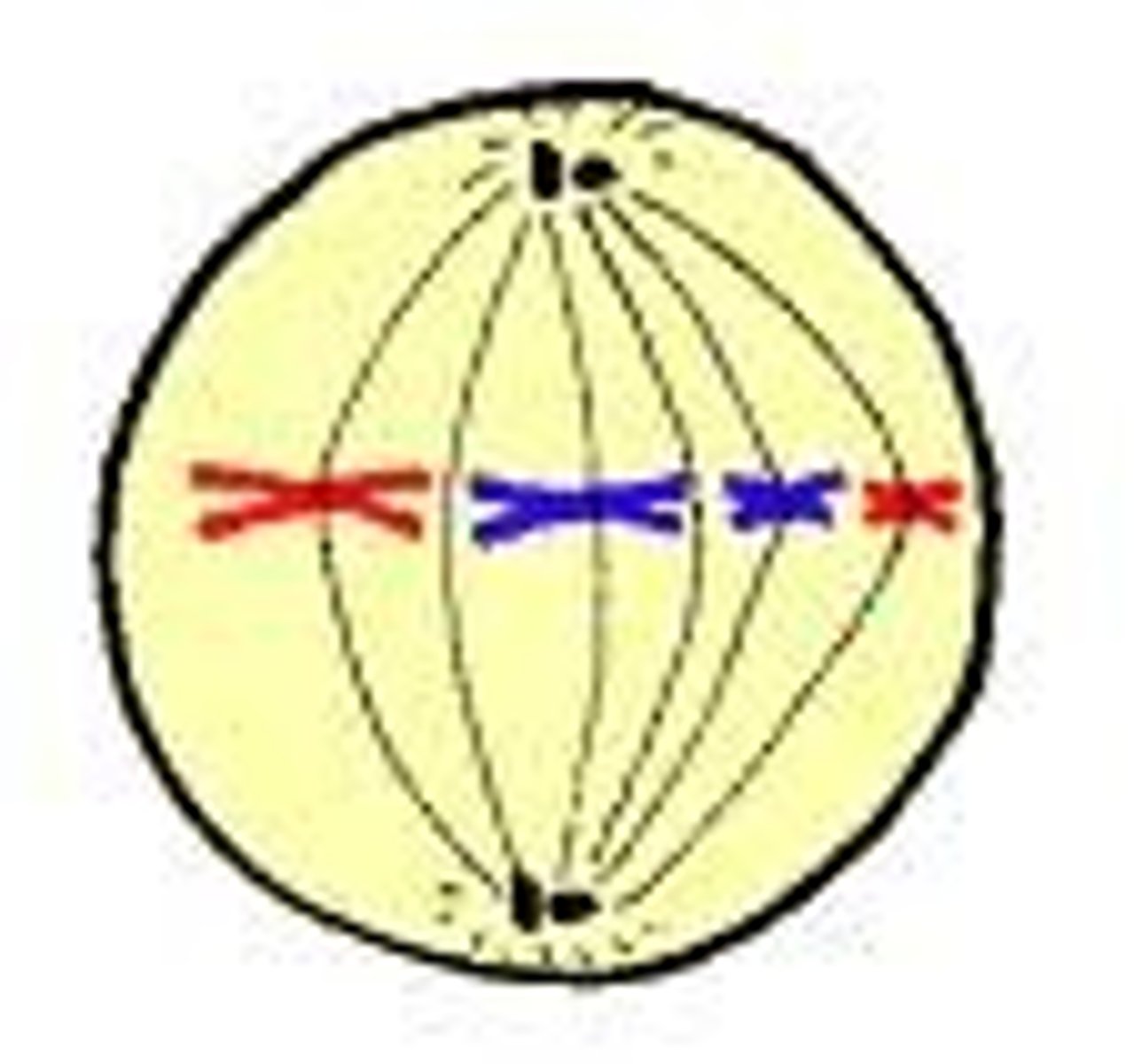
What happens in metaphase?
- Centrosomes reach opposite poles
- Chromosomes line up along the equator of the cell
- Spindle fibres attach to the centromere on the chromosomes
- Each sister chromatid is attached to spindle fibre originating from opposite poles
Metaphase under the microscope
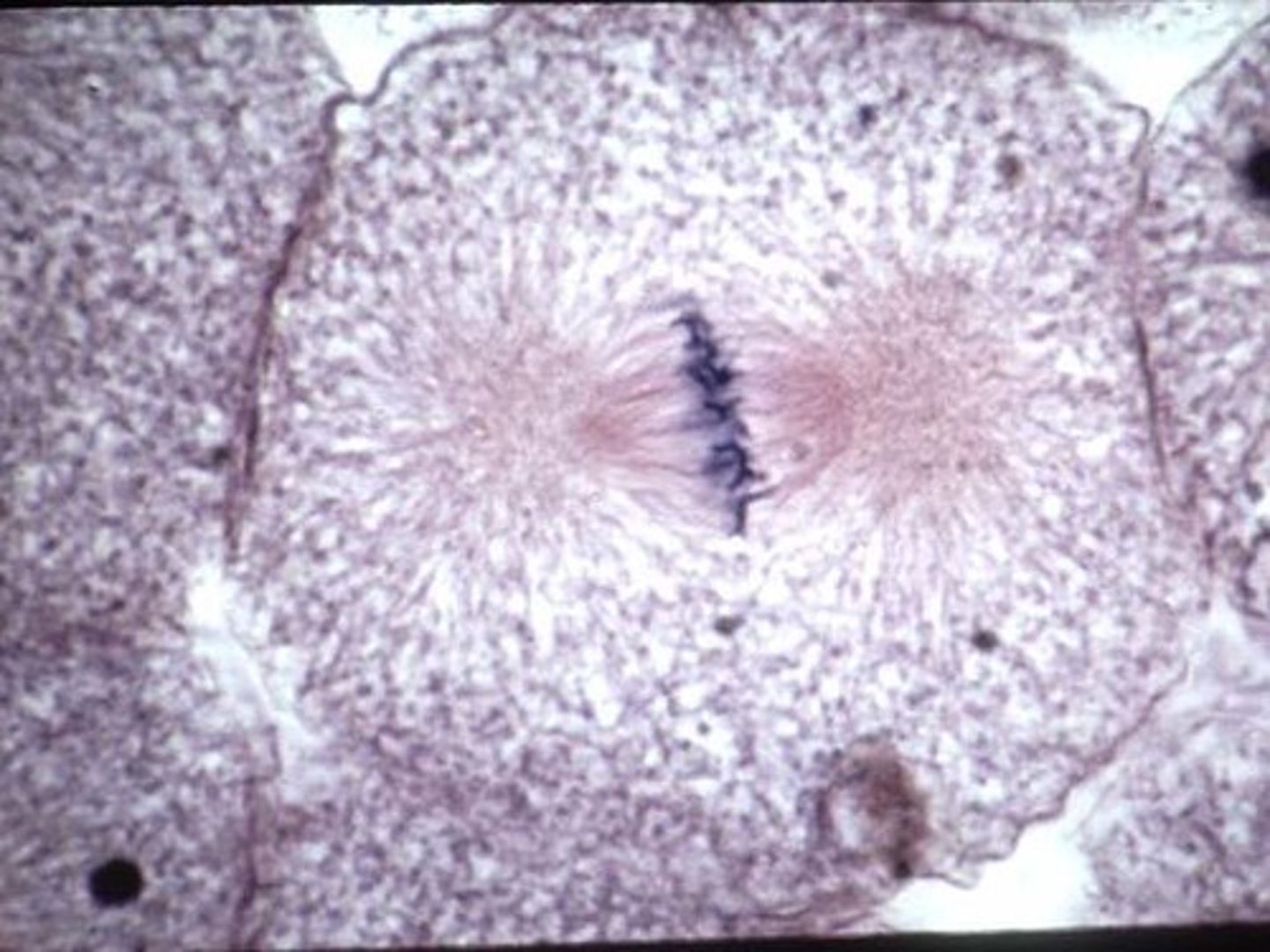
3) Anaphase
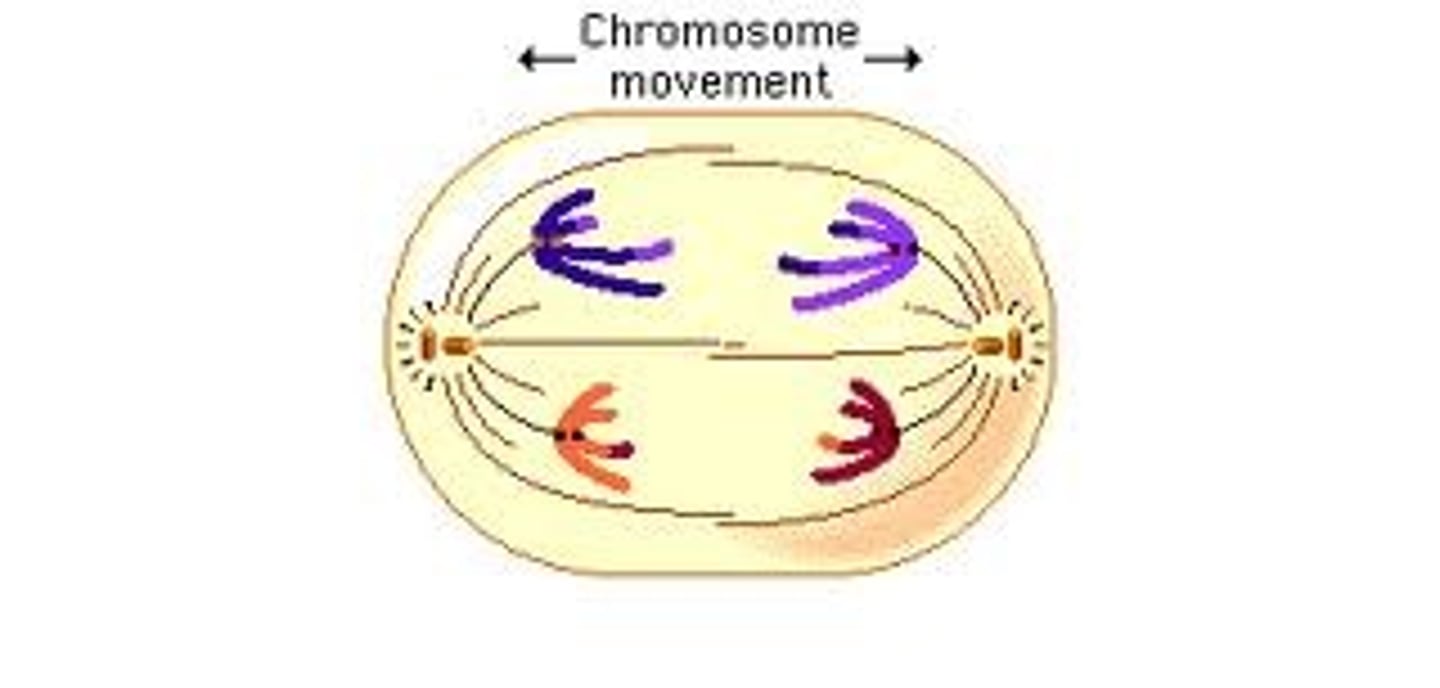
What happens in anaphase?
Chromatids are pulled to opposite poles of the cell by spindle fibres contracting
Centromere breaks
Anaphase under microscope
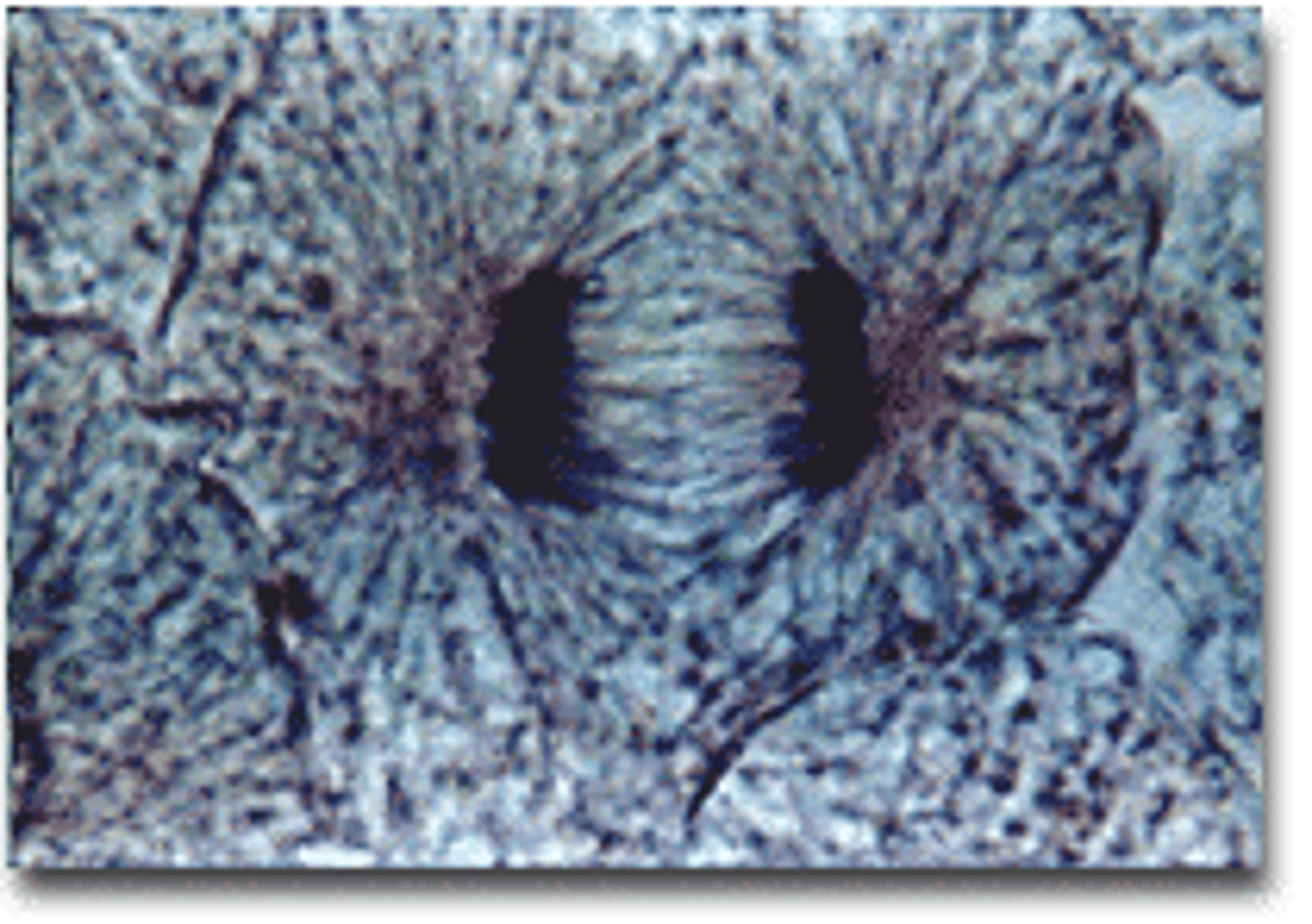
4) Telophase
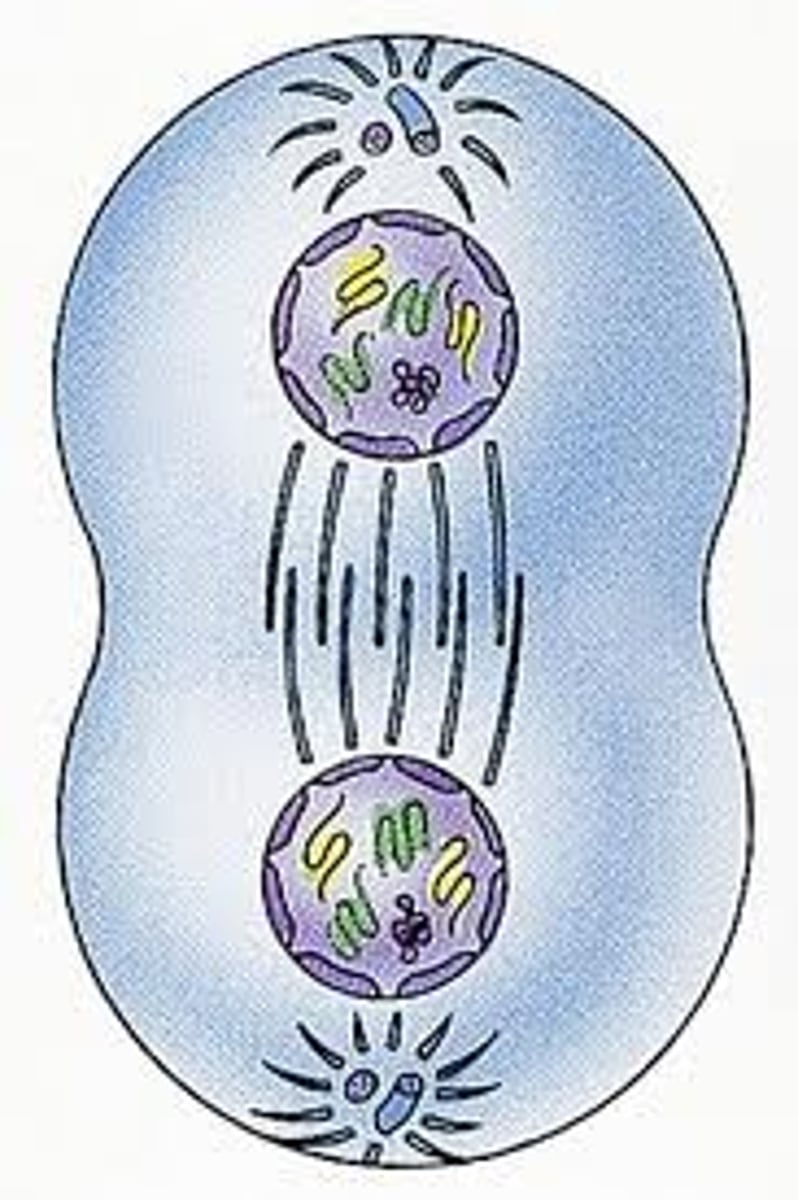
Why do the chromosomes make a v shape in anaphase?
Due to them being dragged by their centromeres through liquid cytosol
What happens in telophase?
- Nuclear envelopes begin to form
- Chromosomes at opposite poles uncoil
- Cell surface membrane undergoes cytokinesis
- The spindle fibres break down
Telophase under microscope
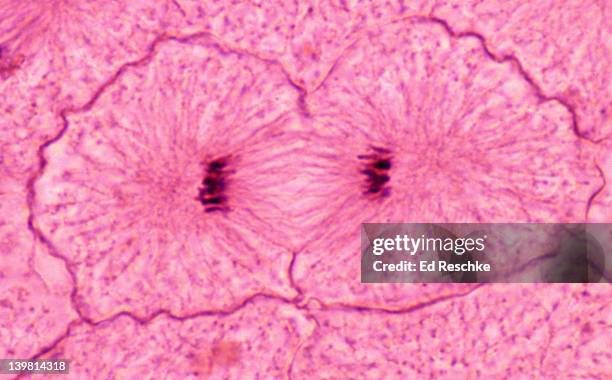
Cytokinesis
The cytoplasm divides and the plasma membrane pinches off to form 2 new, genetically-identical cells.
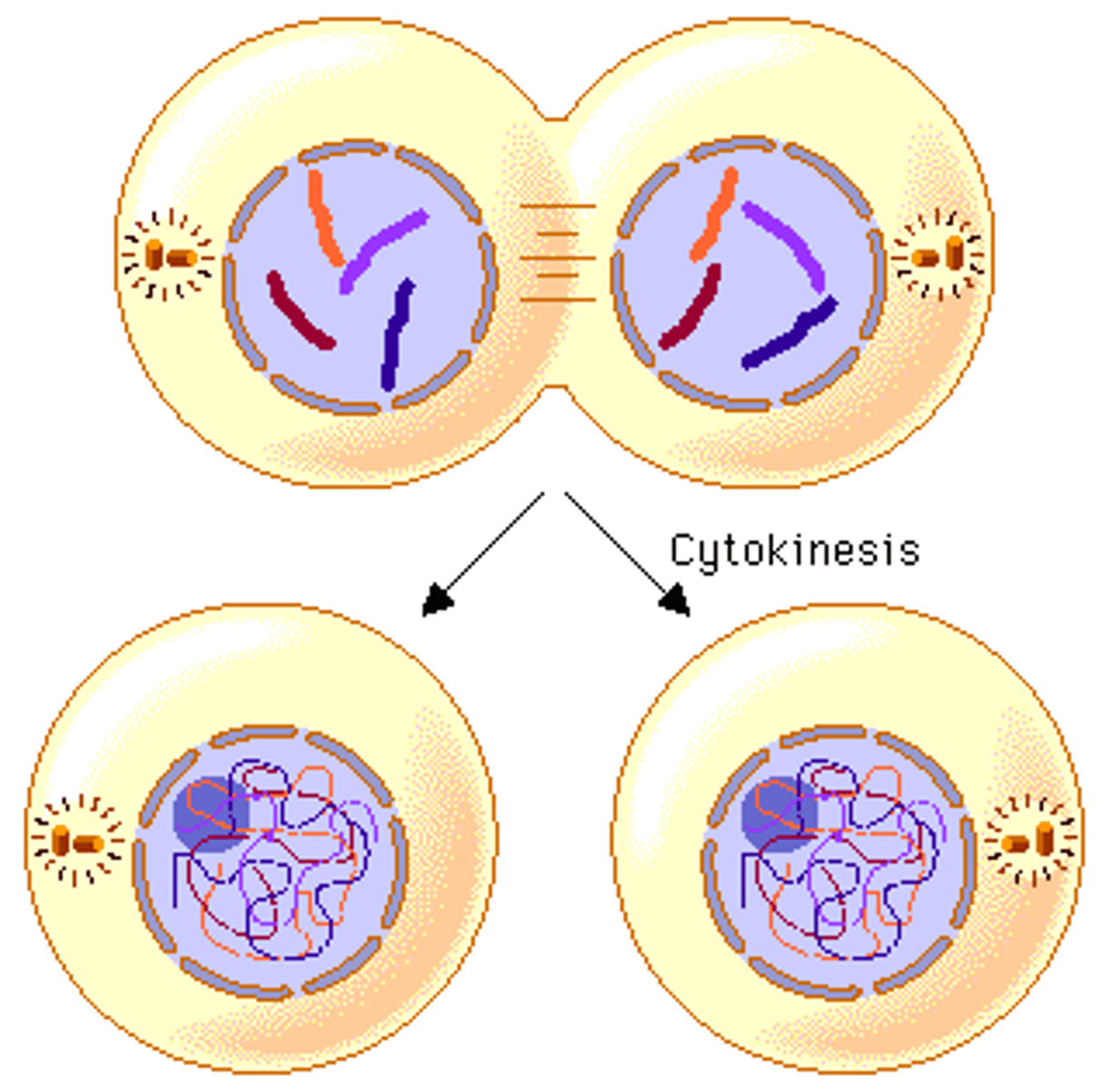
What is a cleavage furrow?
A groove in the plasma membrane between daughter nuclei
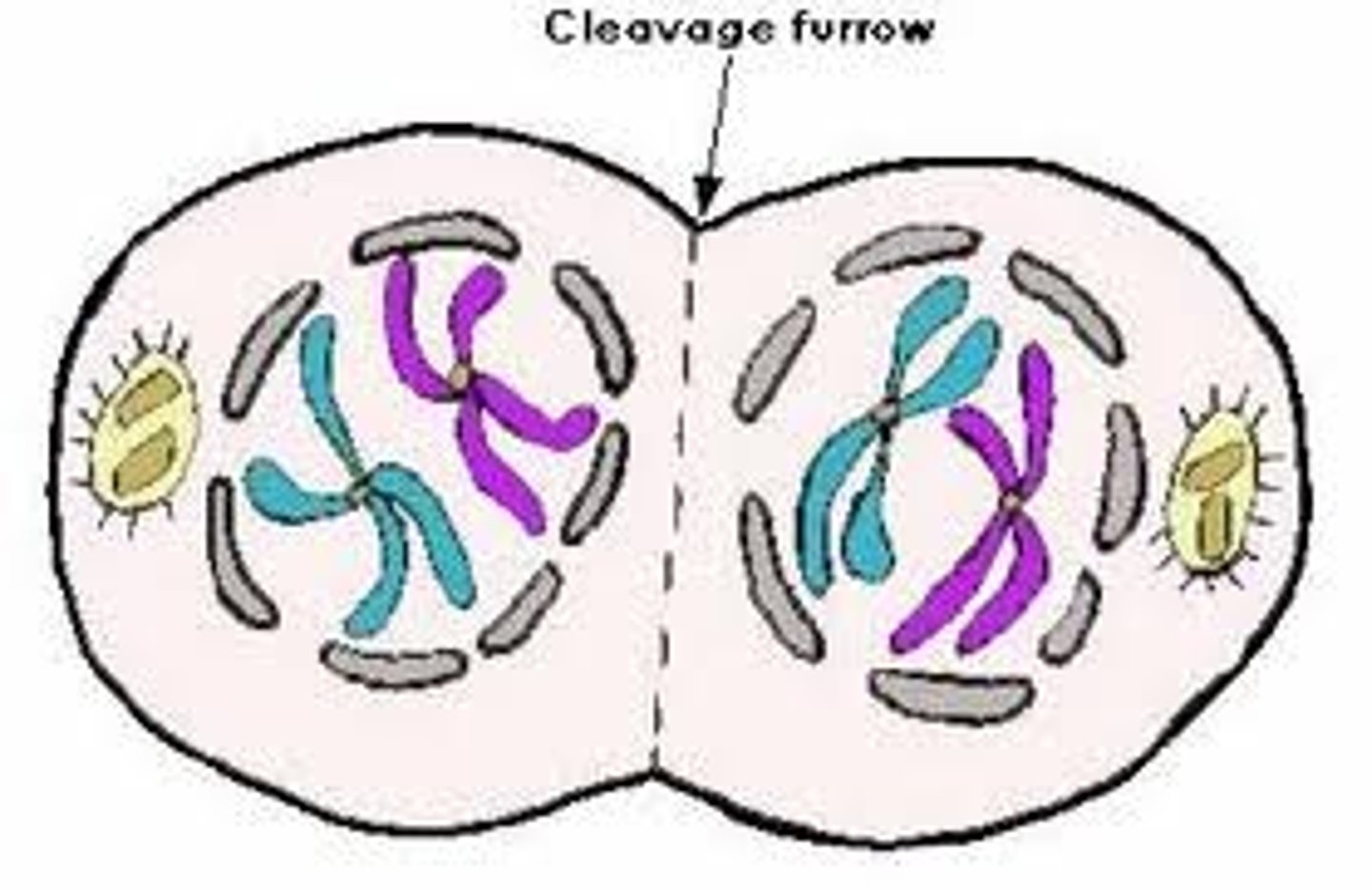
Why don't plant cells perform mitosis the same way animal cells do?
Plant cells have cell walls, so it is not possible to form a cleavage furrow.
How do plant cells undergo mitosis?
1) Vesicles from the Golgi Apparatus assemble in the same place in the centre (the cell plate)
2) The vesicles fuse with each other, dividing the cell into two.
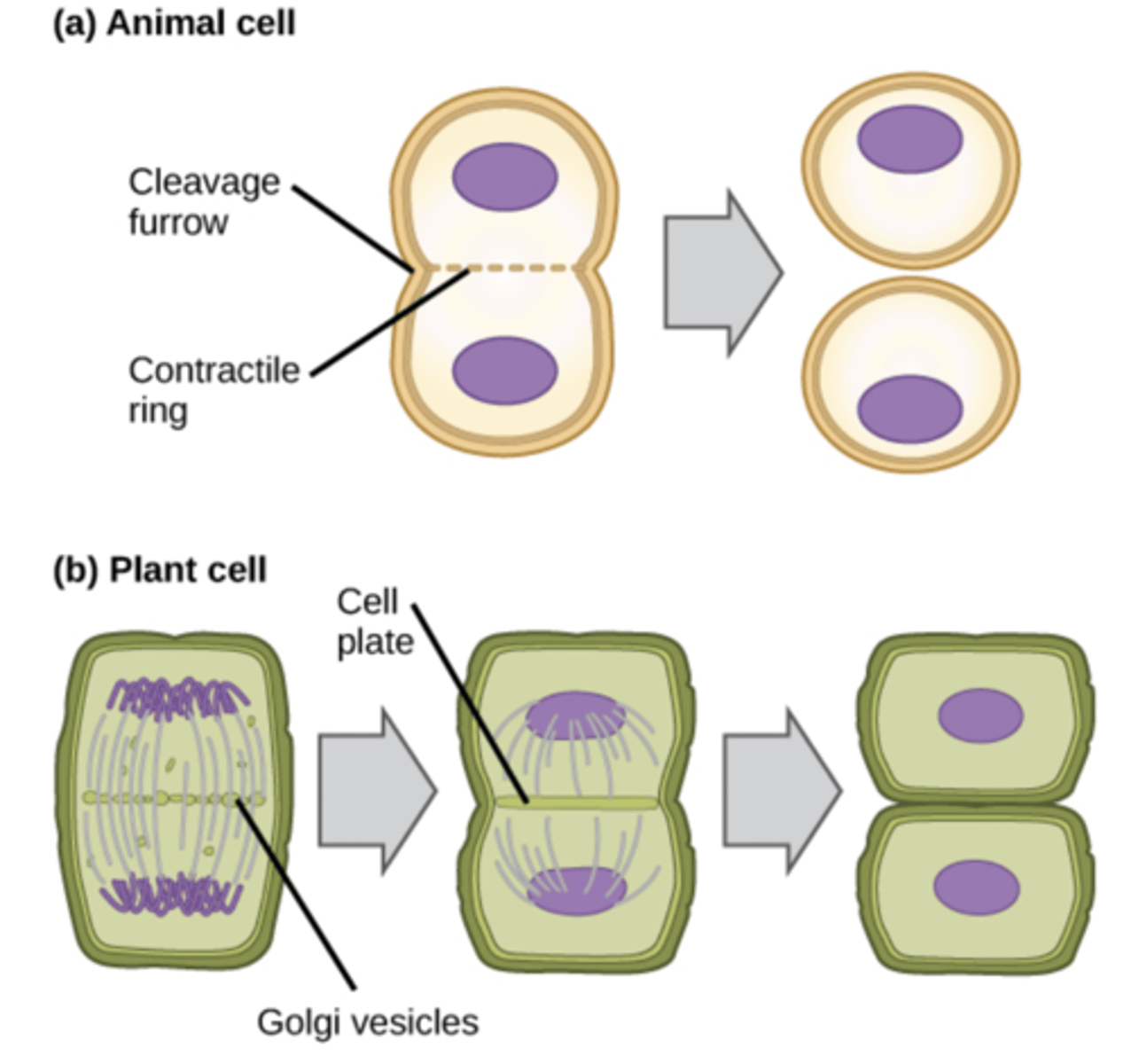
Why are chromosomes only visible during mitosis/meiosis?
Chromosomes are visible during mitosis because they condense themselves to thick, visible strands.
Normally they are more spread out as thin strands and invisible to see
Why do we normally see chromosomes as a double structure containing two chromatids?
Because chromosomes are only visible under microscope during mitosis/meiosis
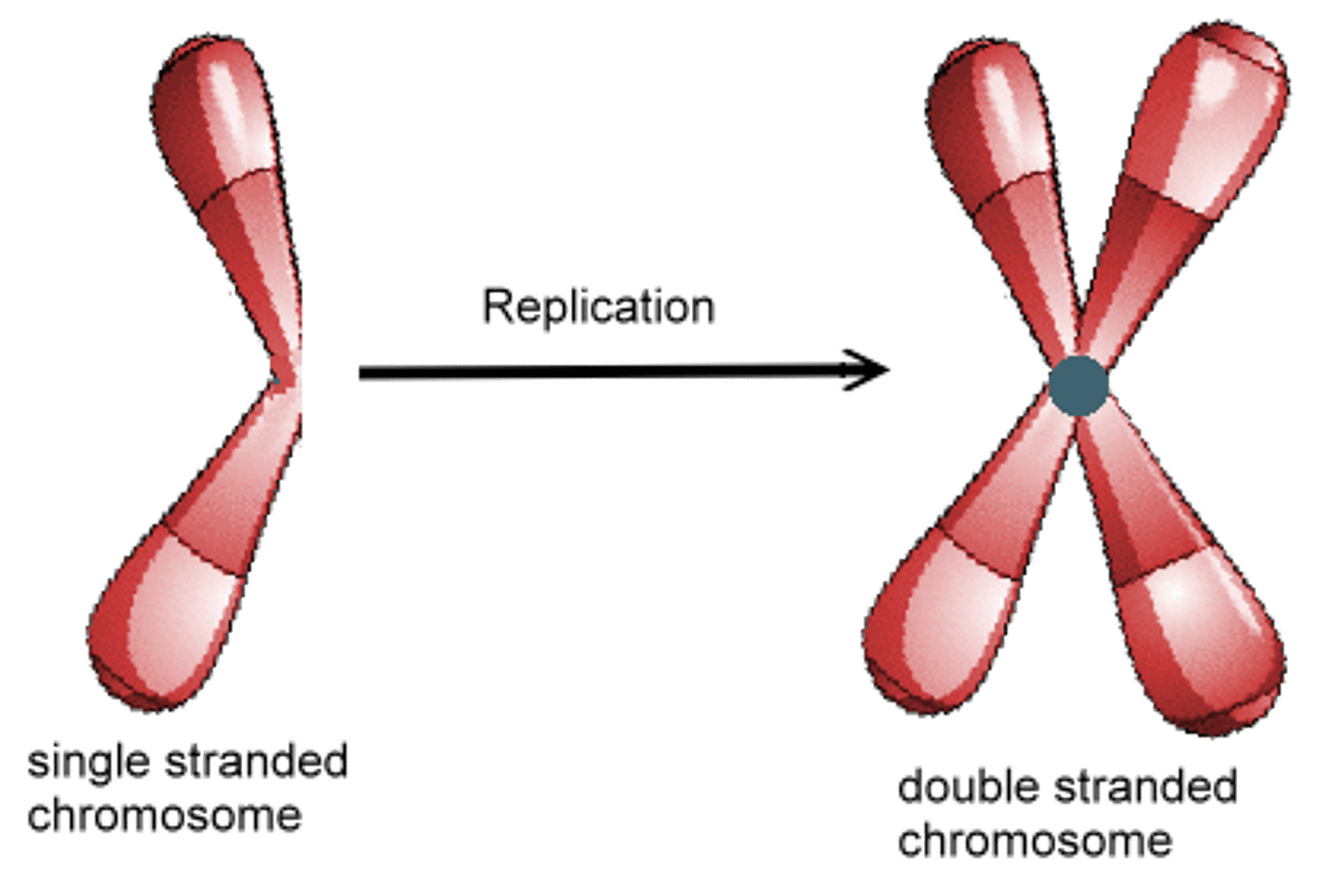
What cells cannot carry out mitosis?
Highly specialised cells (like guard cells) cannot divide by mitosis to form new cells
These cells are in G0
Cytoskeleton may not be able to function
These cells are instead produced from stem cells
Root Tip Squash Experiment
1) Heat the onion root tips / plant sample in acid. This is to break down the cell wall
3) Stain the onion root tips. We stain the sample to provide contrast, and to make the chromosomes more visible
3) Squash the sample. This is to make the sample as thin as possible (1 cell thick) so that light can pass through the sample
What’s a suitable stain for root tip squash?
Acetic orcein
Calculating Mitotic Index
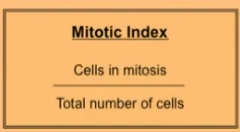
What are diploids?
Cells with a complete set of chromosomes
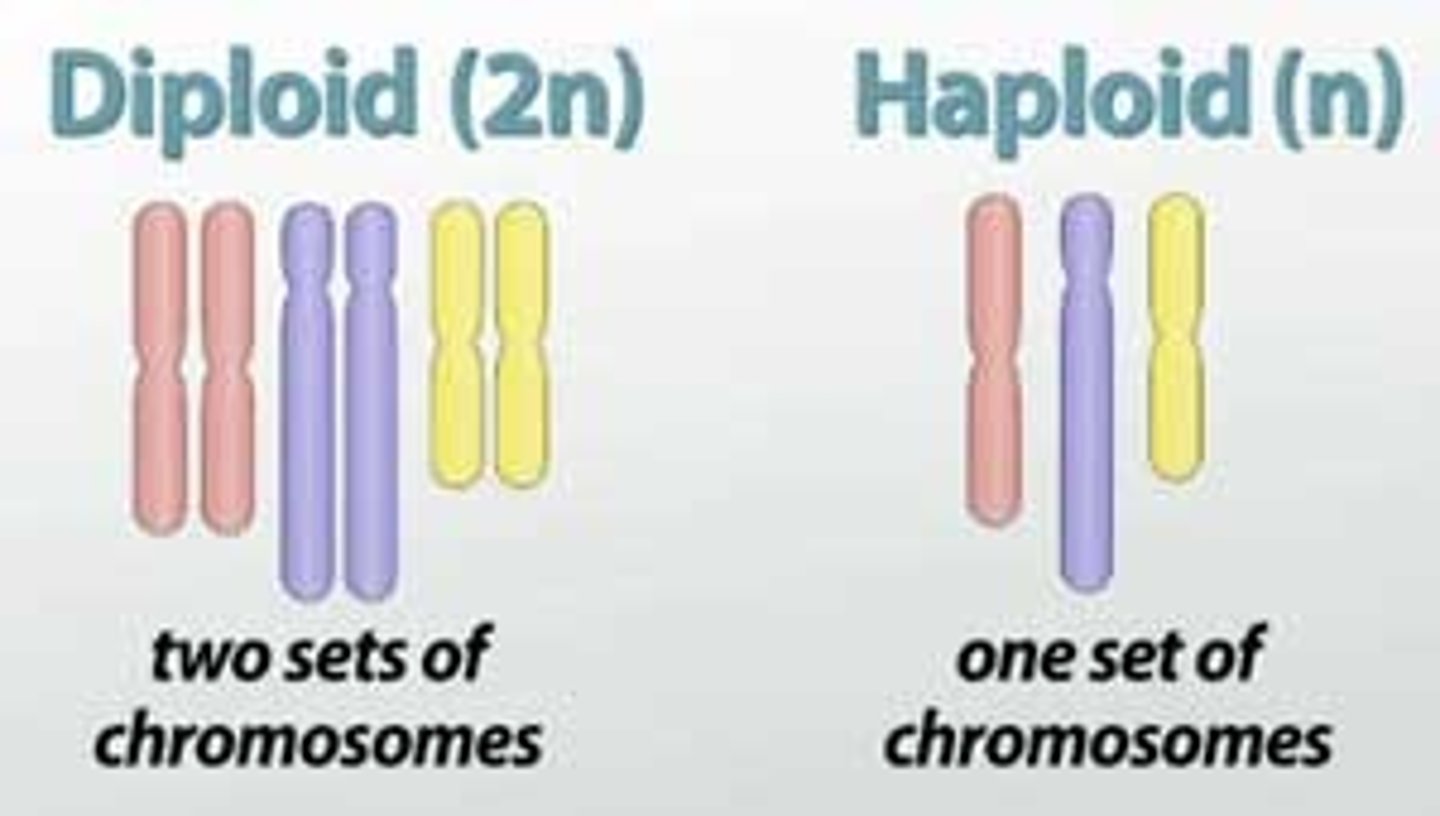
What are haploids?
Cells that have one copy of each chromosome
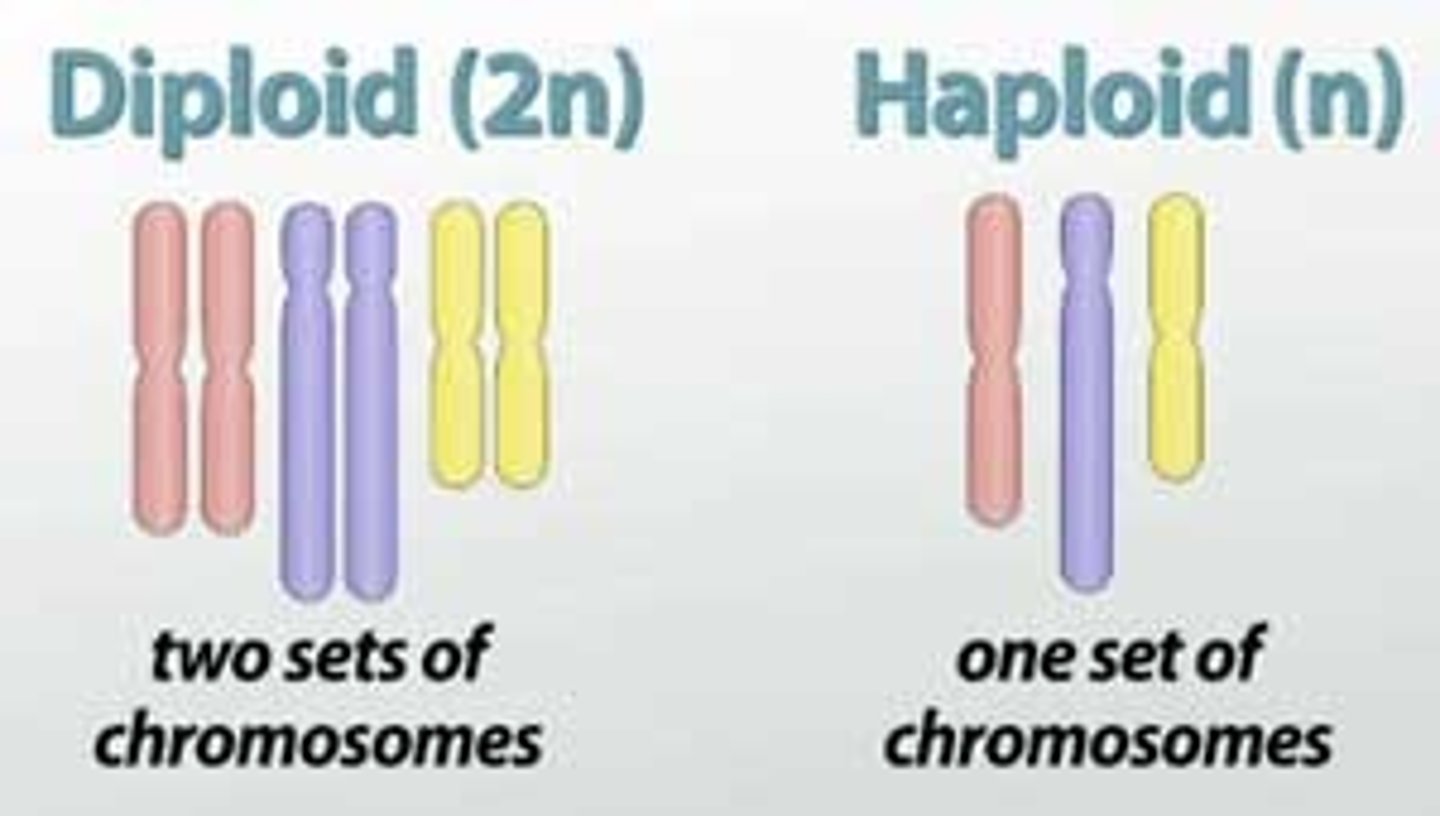
What are gametes?
Genetically different haploid cells (sex cells)
What are zygotes?
Fertilized eggs
Different versions of the same genes are called...
alleles.
Definition of homologous pair of chromosomes?
One is maternal, one is paternal. They have the same genes, different alleles, and they are the same length with the centromere in the same place
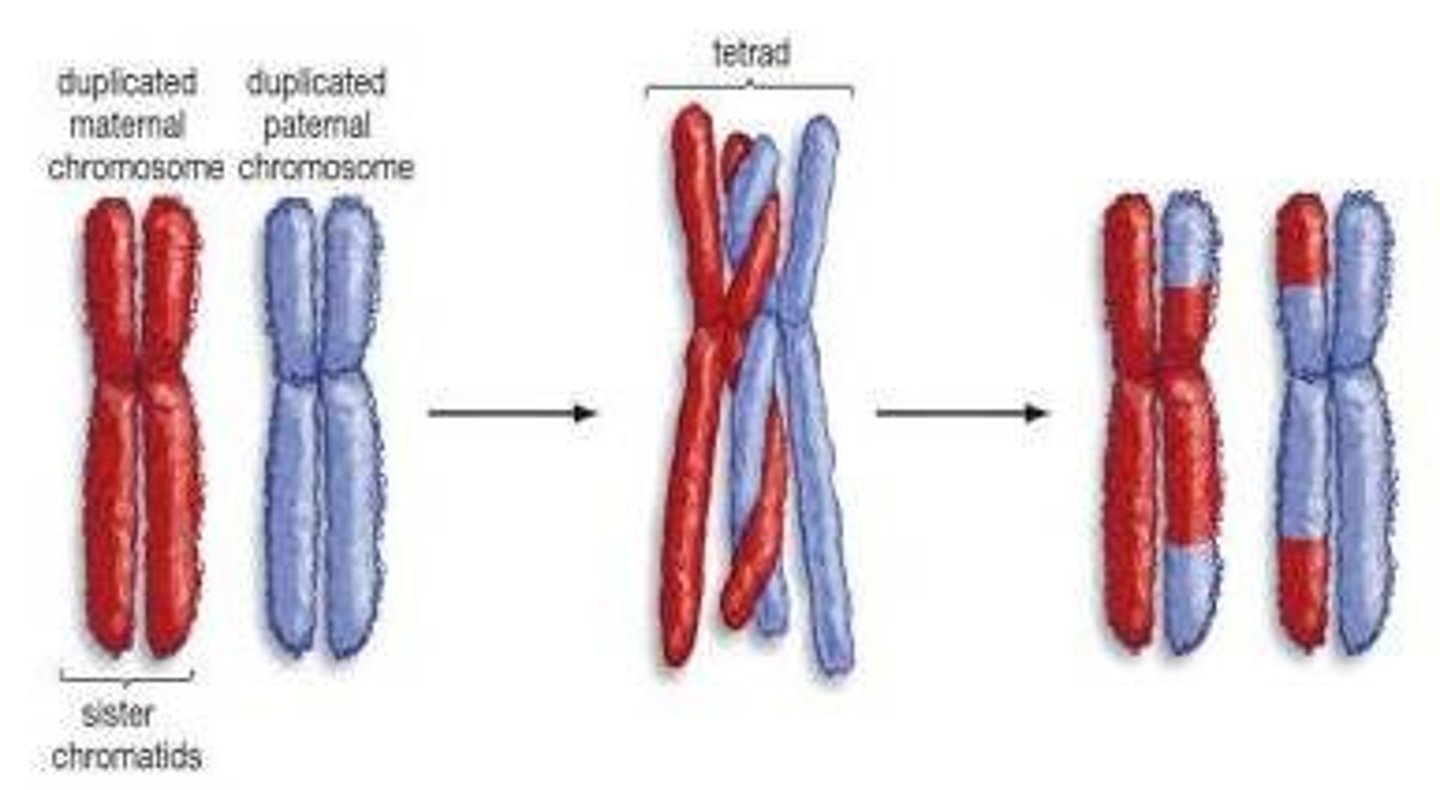
What are a pair of homologous chromosomes called?
Bivalent
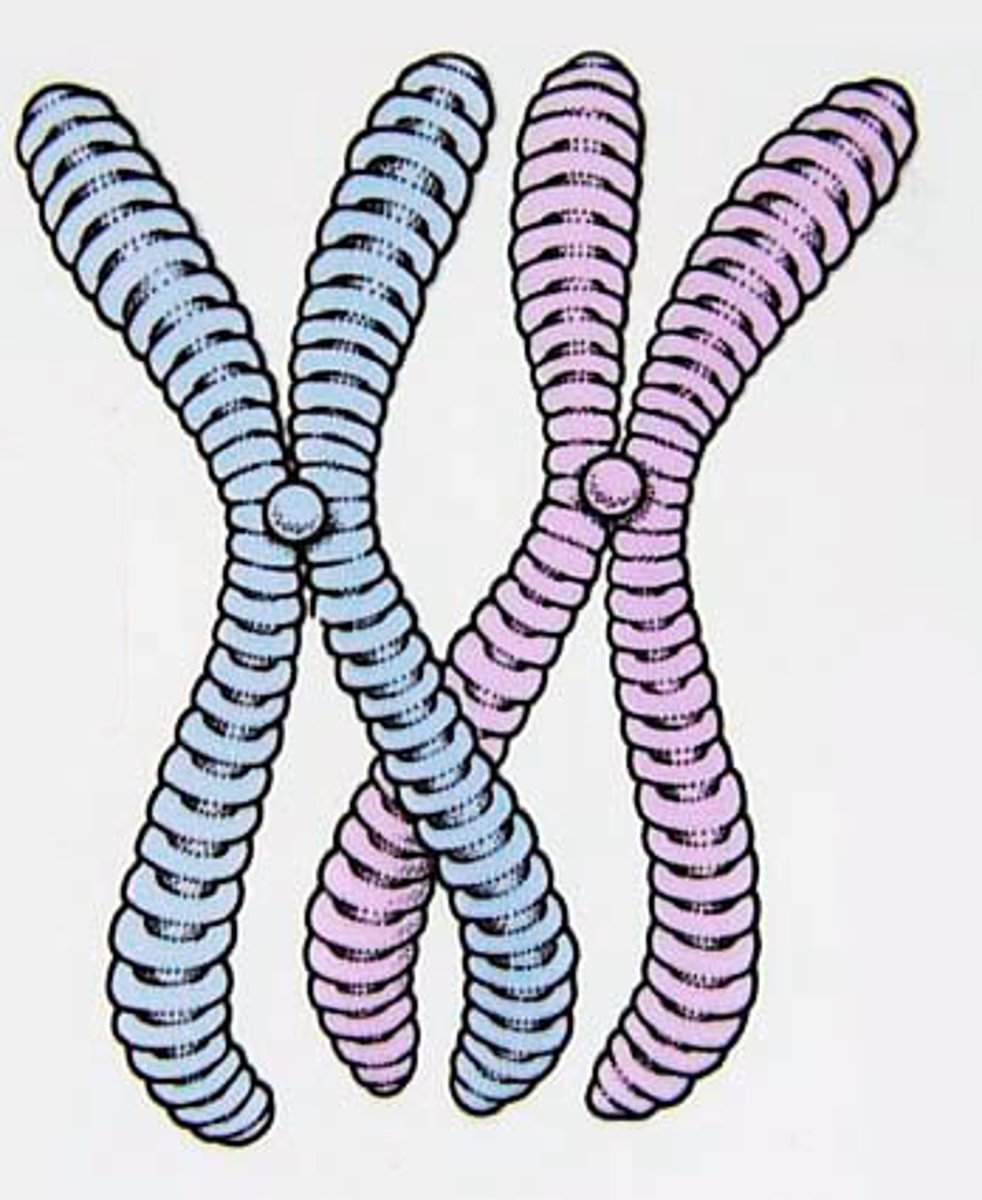
Different alleles of a gene all have the same what?
locus
What is a locus?
Location of a gene on a chromosome
What is meiosis?
It produces 4 genetically different haploid gametes.
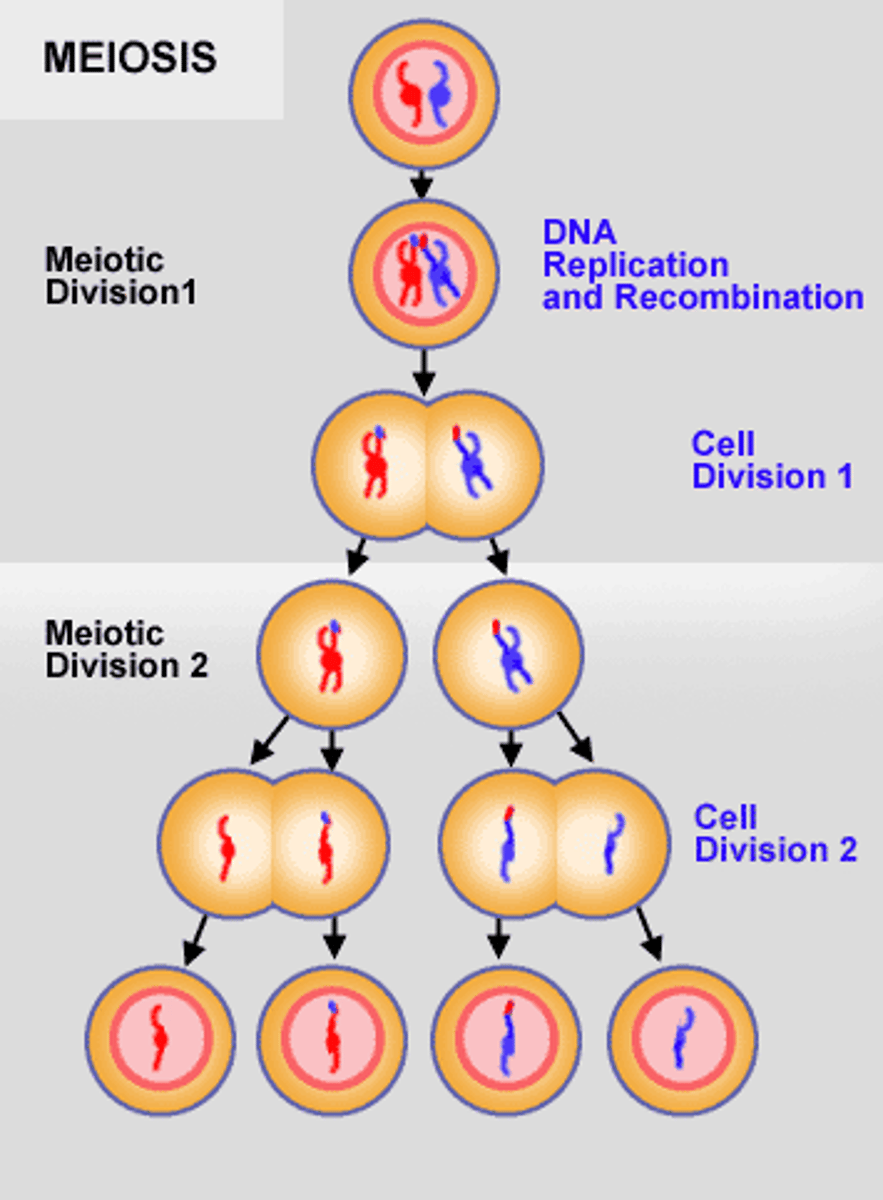
Why do the gametes have to be haploid?
So they can form a diploid zygote
In exam questions, how do you know if the diagram is showing mitosis or meiosis?
If the genetic information has reduced, it is meiosis
If the genetic information has not reduced, it is mitosis.
What causes genetic difference in meiosis?
- Crossing over
- Independent assortment
What happens in Meiosis I?
- It is the reduction division
- The pairs of homologous chromosomes in the diploid cell are separated into two cells.
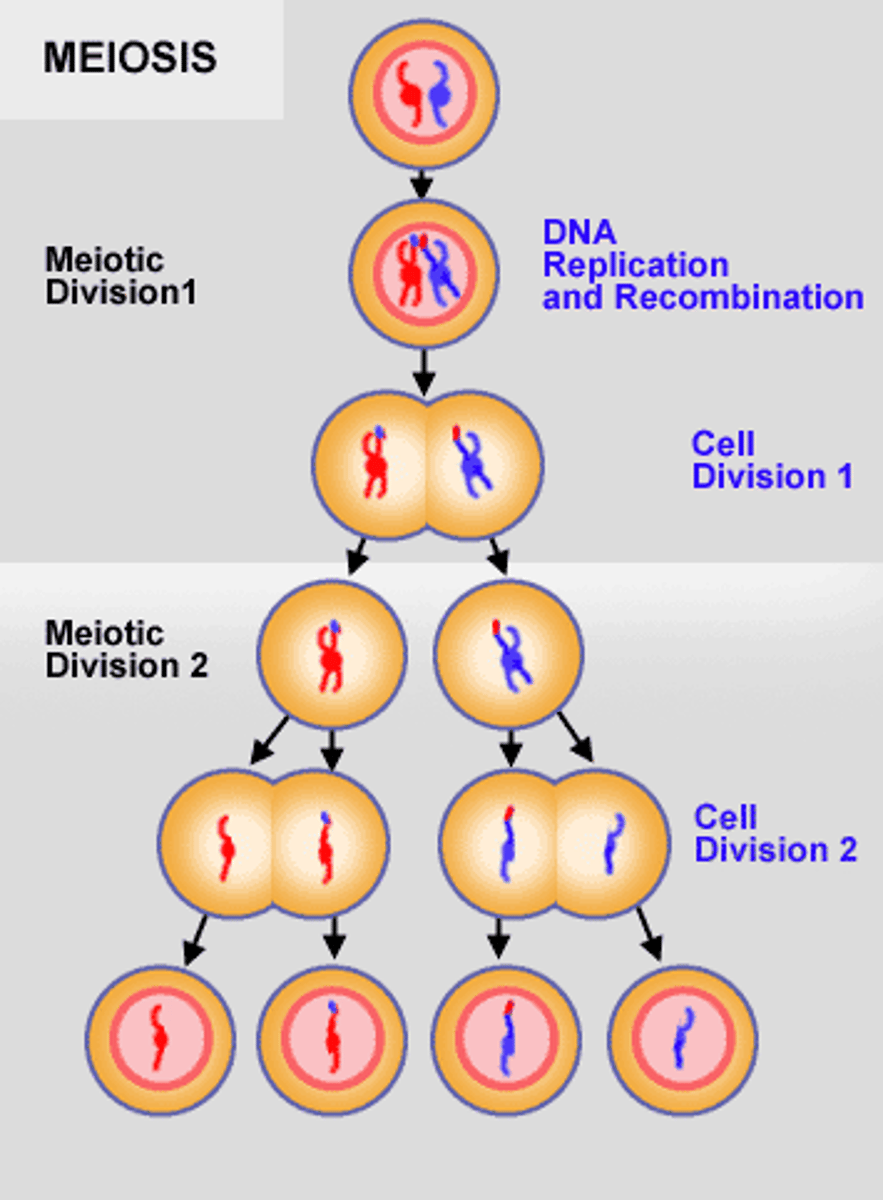
What does Meiosis I produce?
2 haploid cells each containing one chromosome from the homologous pairs.
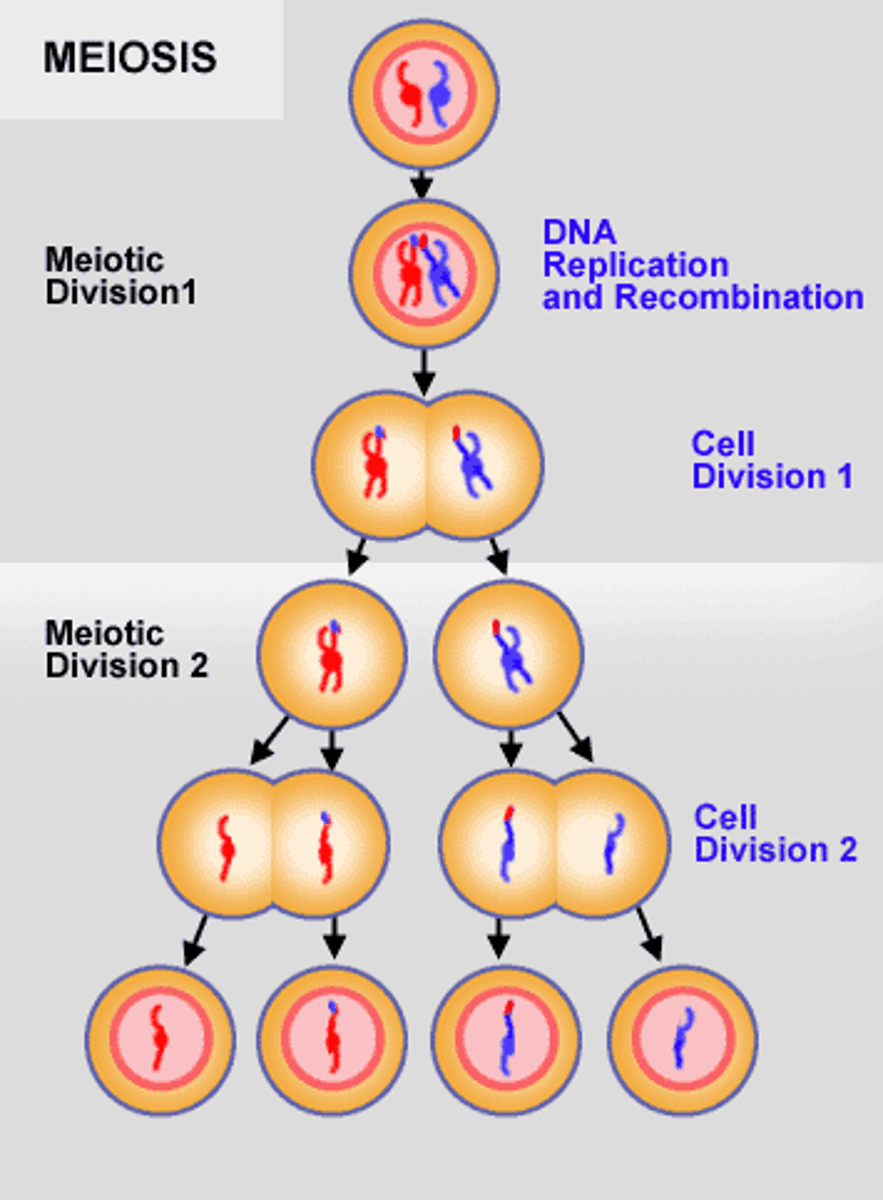
Interphase I
The DNA replicates so there are now two identical copies of each chromosome.
Prophase I
- Chromatin condenses
- The homologous pairs form a bivalent
- Crossing over occurs
- The nuclear envelope breaks down and the nucleolus disintegrates.
- Centrioles migrate to opposite poles and spindle is formed
What is crossing over and how does it increase genetic variation?
- Homologous chromosomes come together to form bivalents
- Chiasmata form.
- The chromosomes can break up at the chiasmata and sections of chromosomes may swap over between non-sister chromatids. The swapping over is only between non-sister chromatids.
- Recombination occurs. The final chromatids still have the same genes, but they may have different alleles.
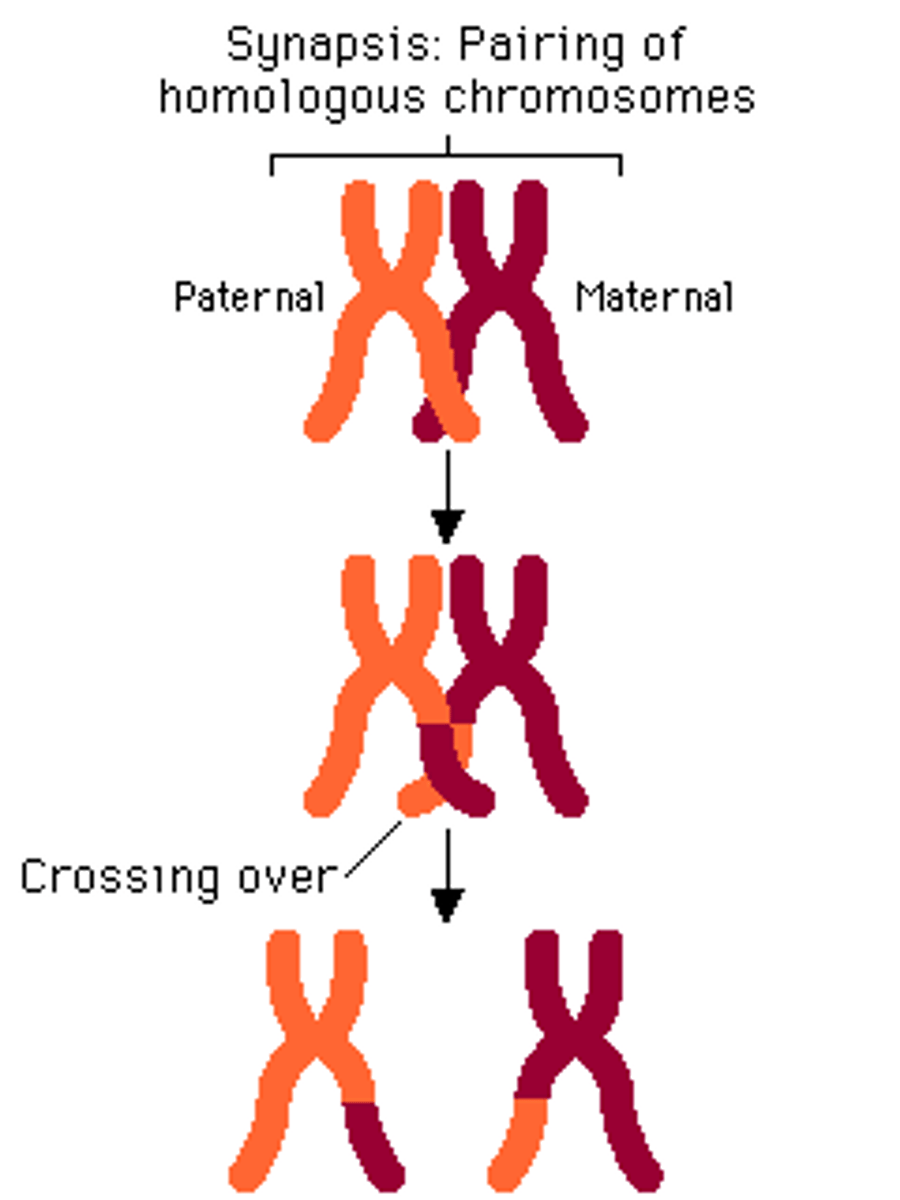
What is chiasmata?
Non sister chromatids wrap around each other, and they join up at certain points called chiasmata.
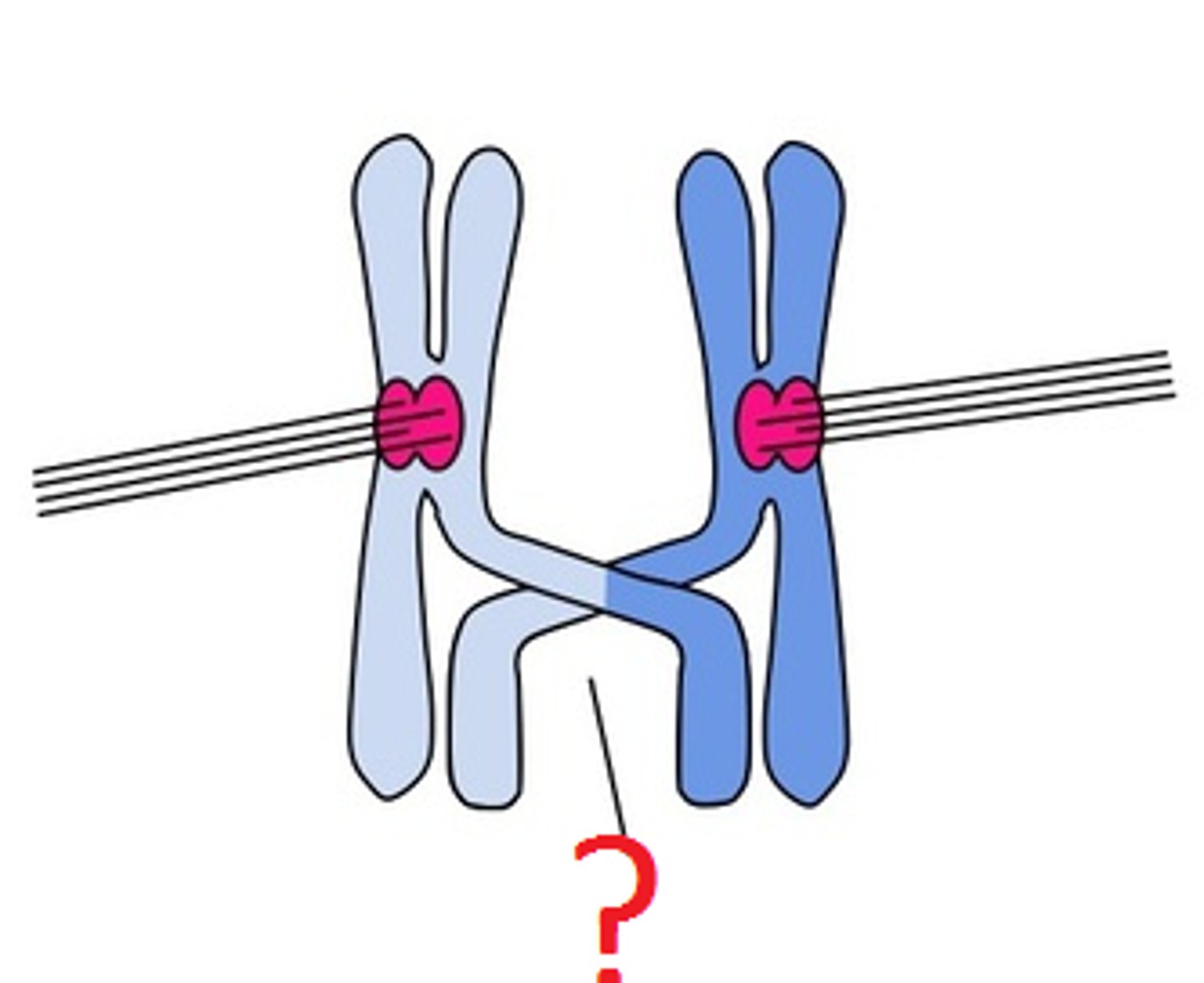
Metaphase I
- The bivalents line up along the equator of the spindle, with the spindle fibres attached to the centromeres
- The maternal and paternal chromosomes in each pair are independently assorted
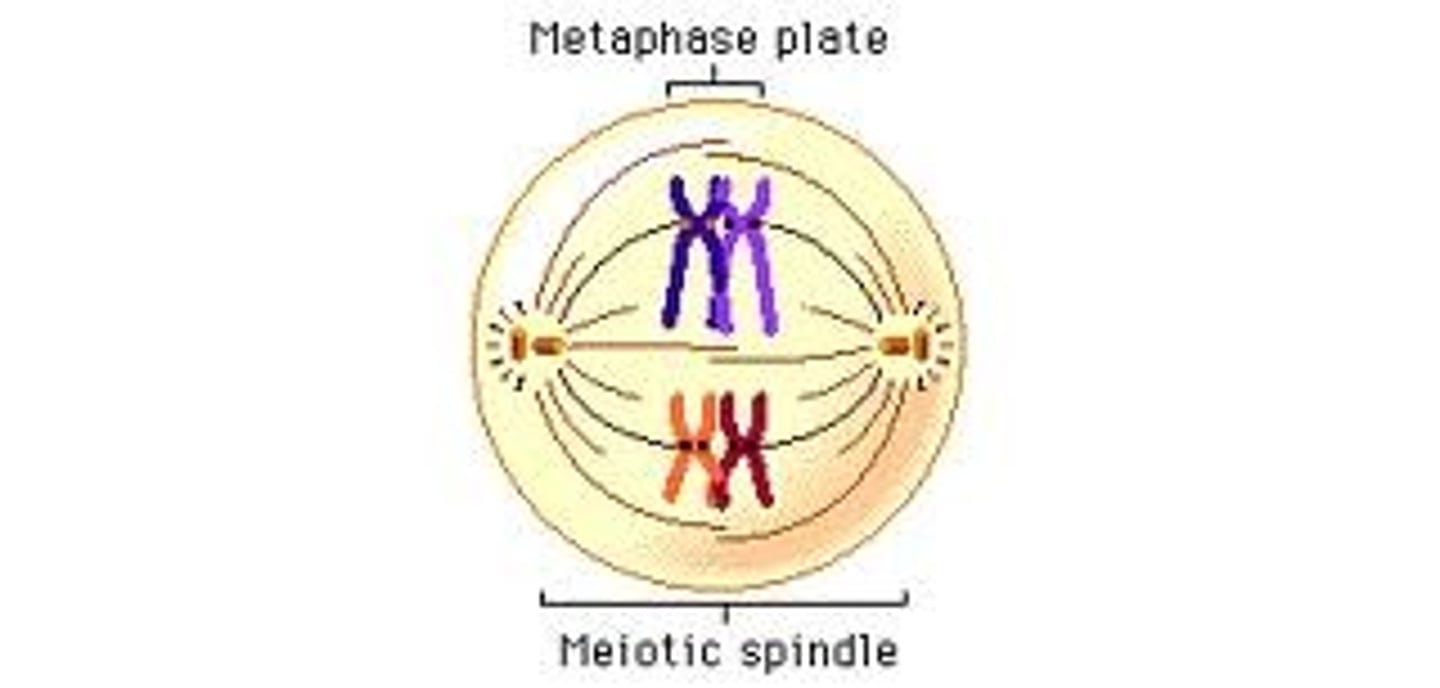
What is independent assortment?
Random distribution of homologous chromosomes.
The proportion of paternal or maternal chromosomes that end up on each side of the equator is due to chance
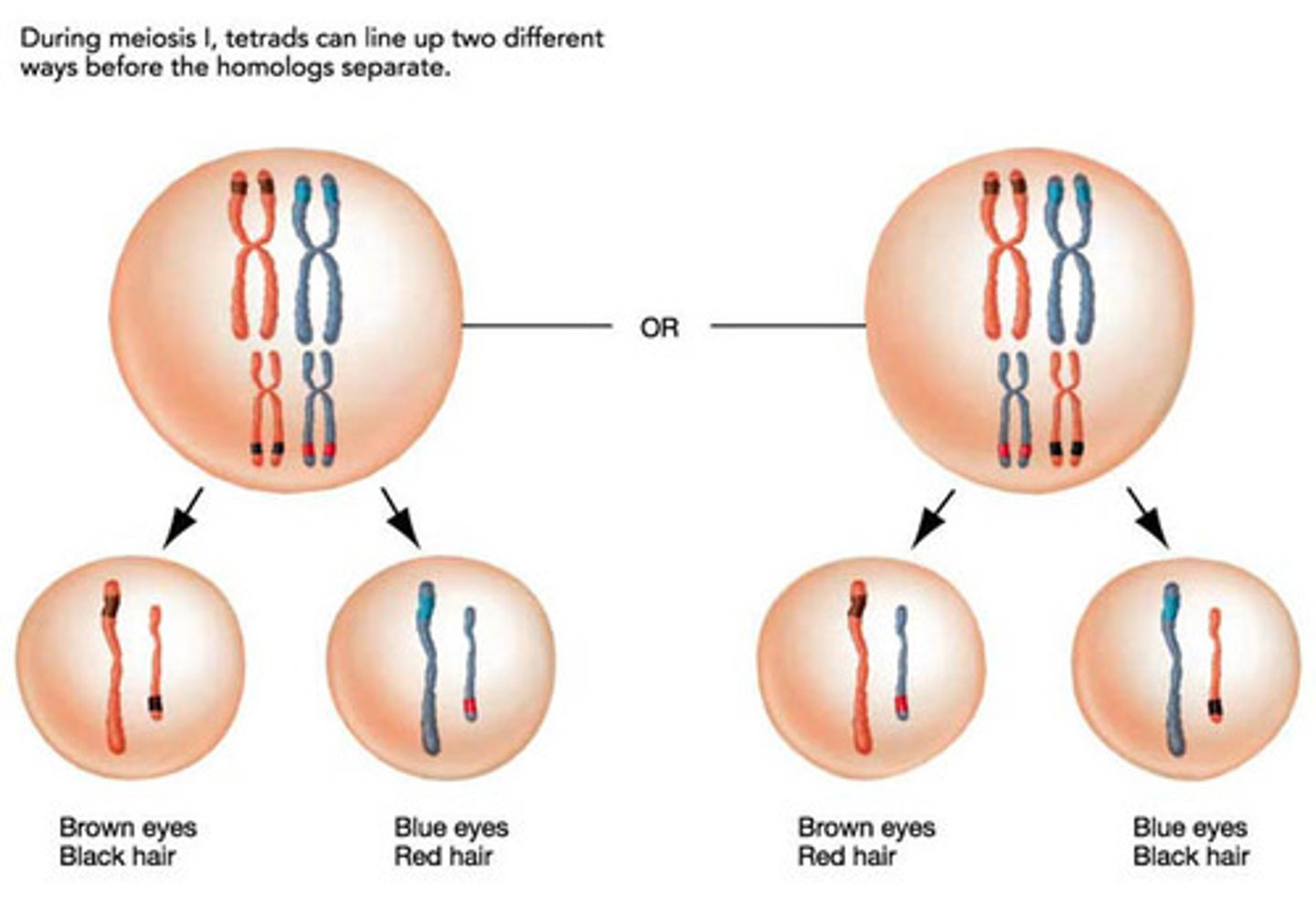
How does independent assortment increase genetic variation?
- Different combinations of chromosomes will end up in each gamete, depending on the order the chromosomes line up in the equator of the cell
- The way in which the chromosomes align themselves on the spindle fibre is completely random, resulting in a huge number of possibilities of chromosomal combinations in the gametes.
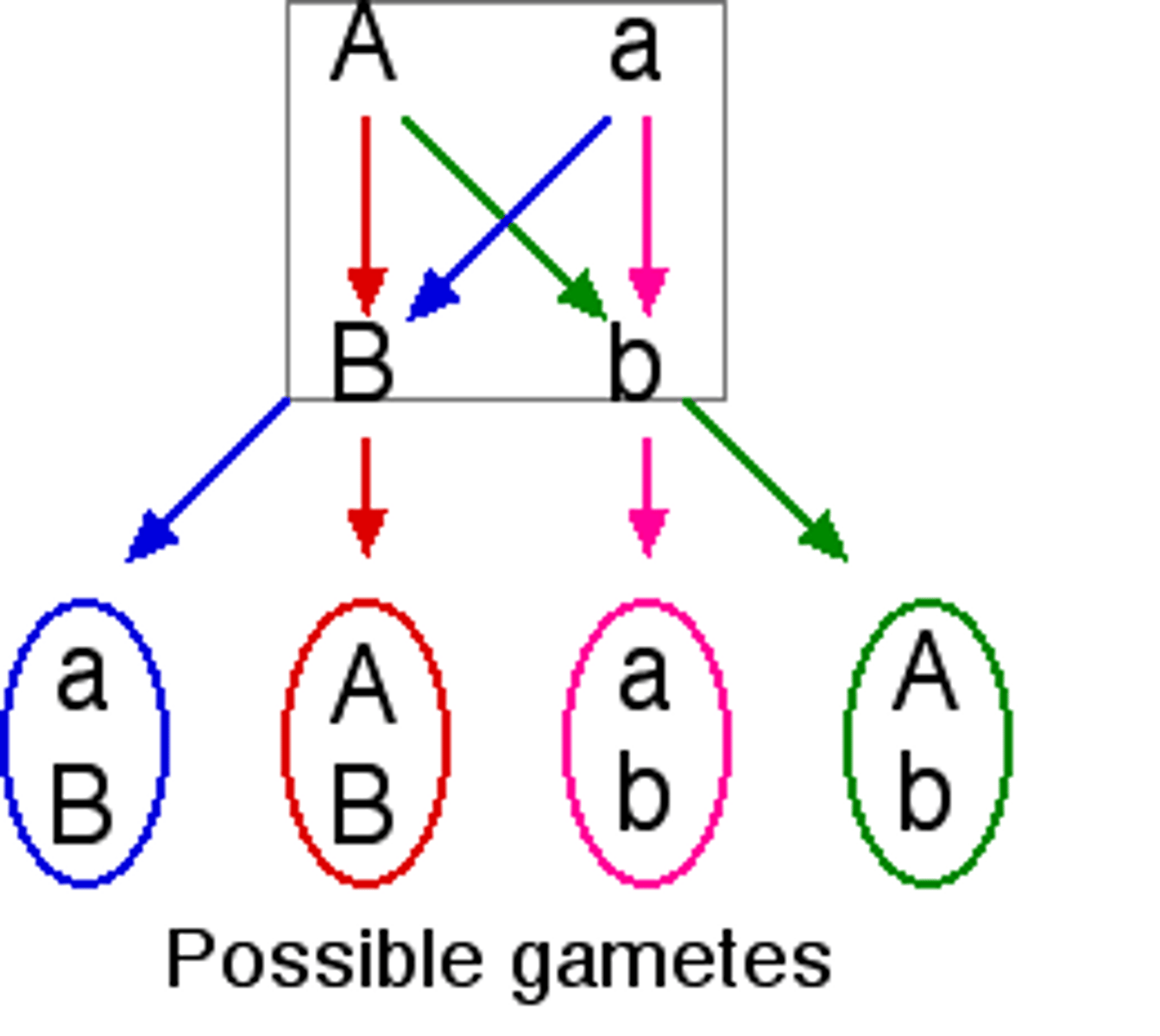
Anaphase I
- The homologous chromosomes of each bivalent separate. They are pulled to opposite poles by spindle fibres
- The centromeres do not divide
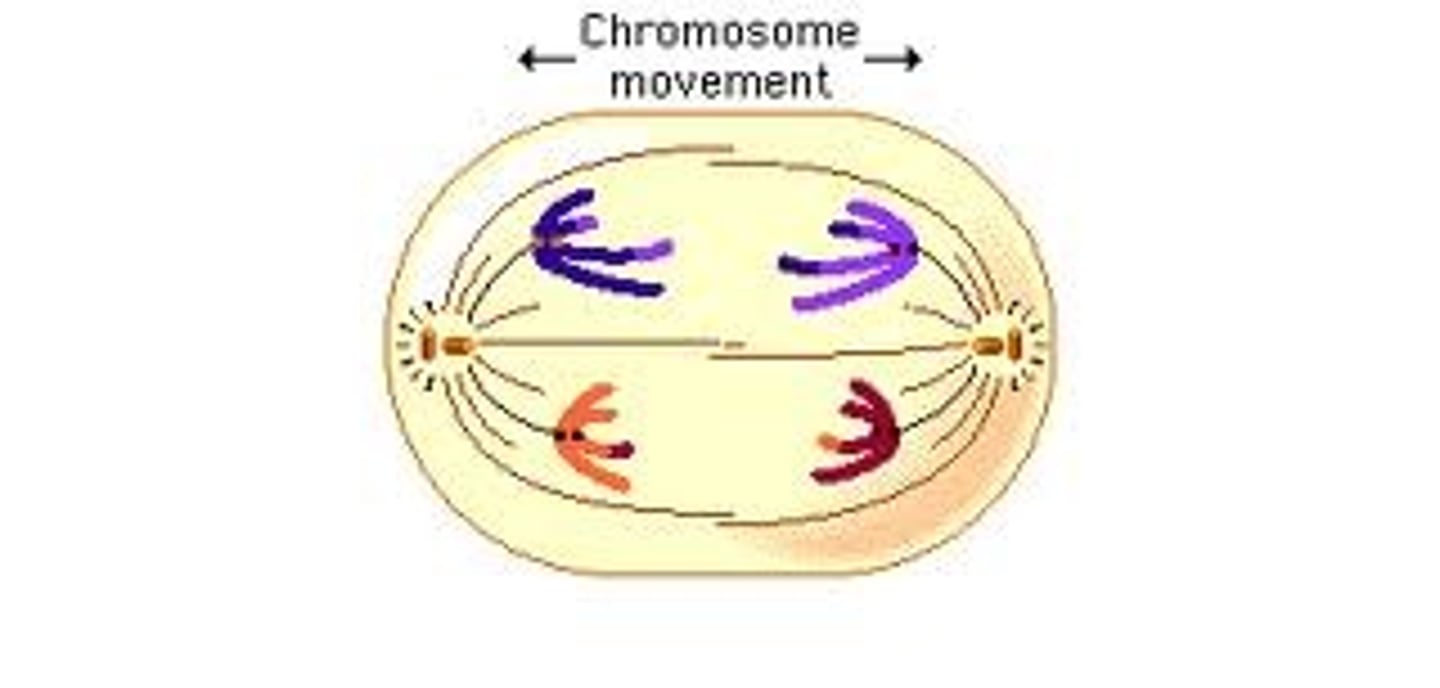
Telophase I
- Chromosomes reach opposite poles and decondense and form 2 nuclei
- Spindle fibres start to break down
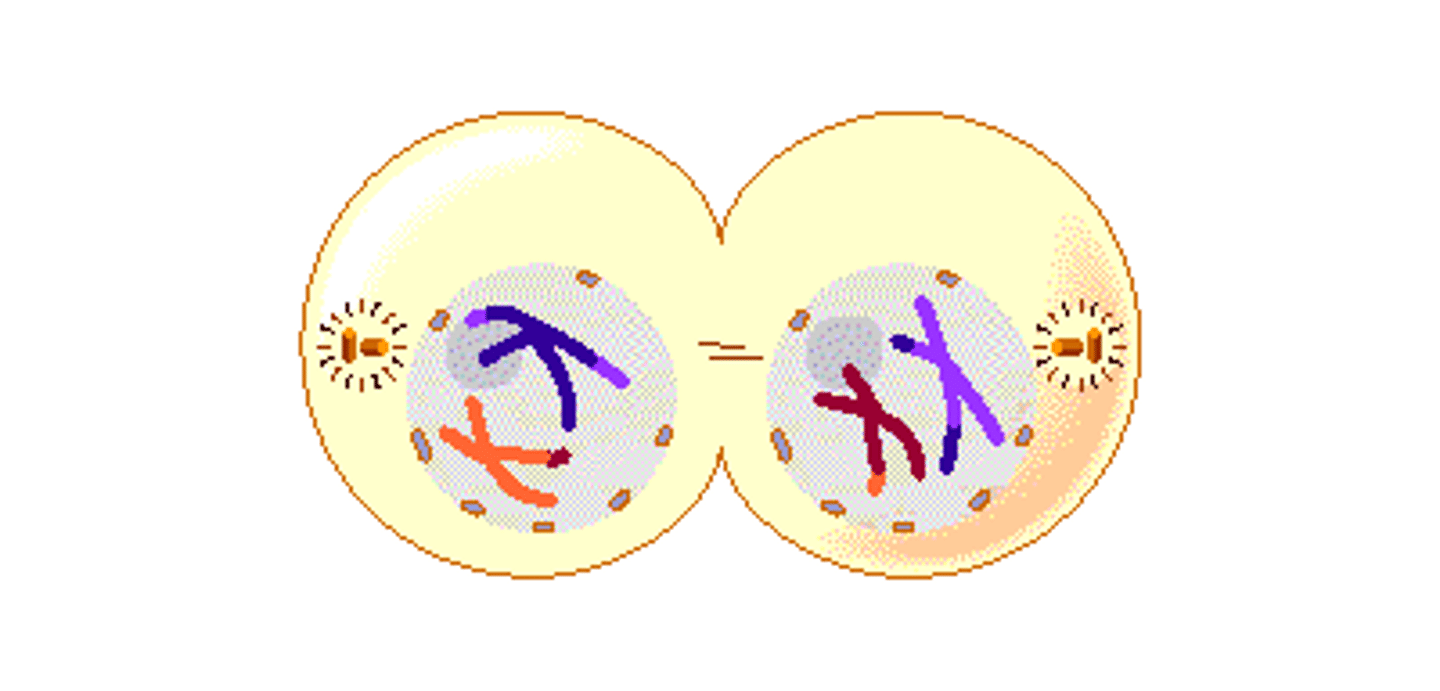
Cytokinesis in Meiosis I
- The plasma membrane folds inwards to form 2 cells. The centrioles divide and new spindles start to form
- Cell organelles also get distributed between the two developing cells
What is the end product of Meiosis I?
2 haploid cells
Meiosis II
- There is no interphase before meiosis II so the DNA is not replicated
What does Meiosis II produce?
4 haploid cells
Prophase II
- Nuclear envelope from telophase I will break down
- The nucleolus disintegrates, chromosomes condense, and spindle forms
Does crossing over happen in prophase II?
No because there are no bivalents
Metaphase II
- Chromosomes line up in a single file along the equator and bind to the spindle fibres at the centromeres
- The chromatids of each chromosome are independently assorted
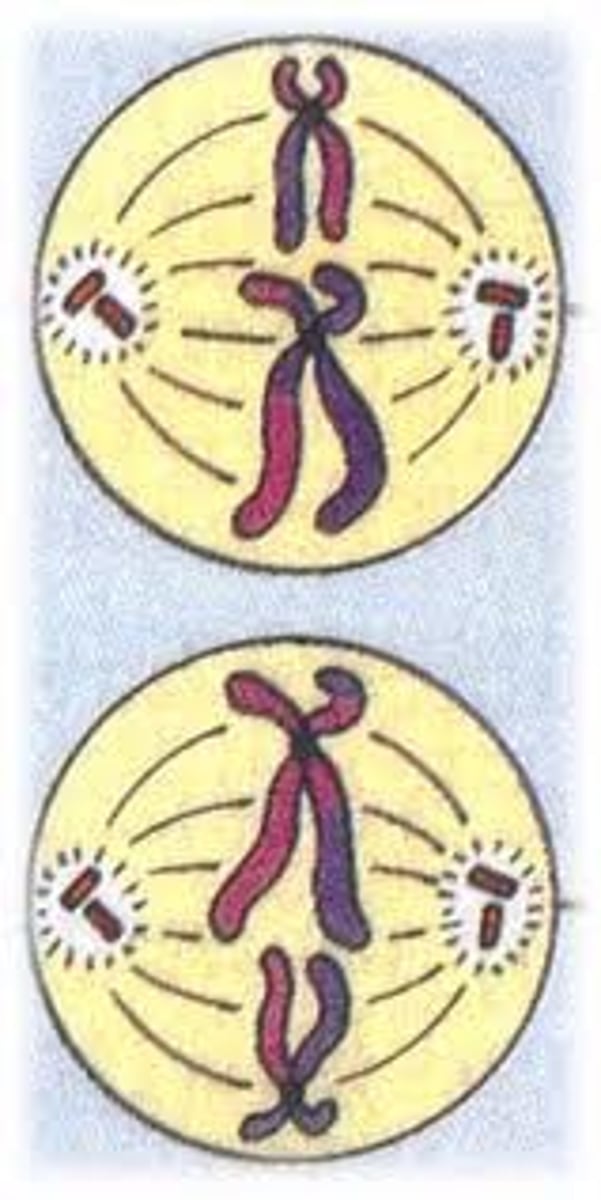
Anaphase II
- The spindle fibres pull the chromatids to opposite ends of the cell
- The centromere divides

Telophase II
- In each cell, 2 nuclear envelopes will develop to form 2 haploid nuclei
- The 2 cell divide by cytokinesis to produce 4 haploid daughter cells

Which stages have independent assortment in meiosis?
Metaphase I
Metaphase II
Why does meiosis require twice as many stages as mitosis?
- To halve the chromosome number
- To separate the homologous pairs of chromosomes
Erythrocyte Function
Transports oxygen around the body and carbon dioxide to the lungs
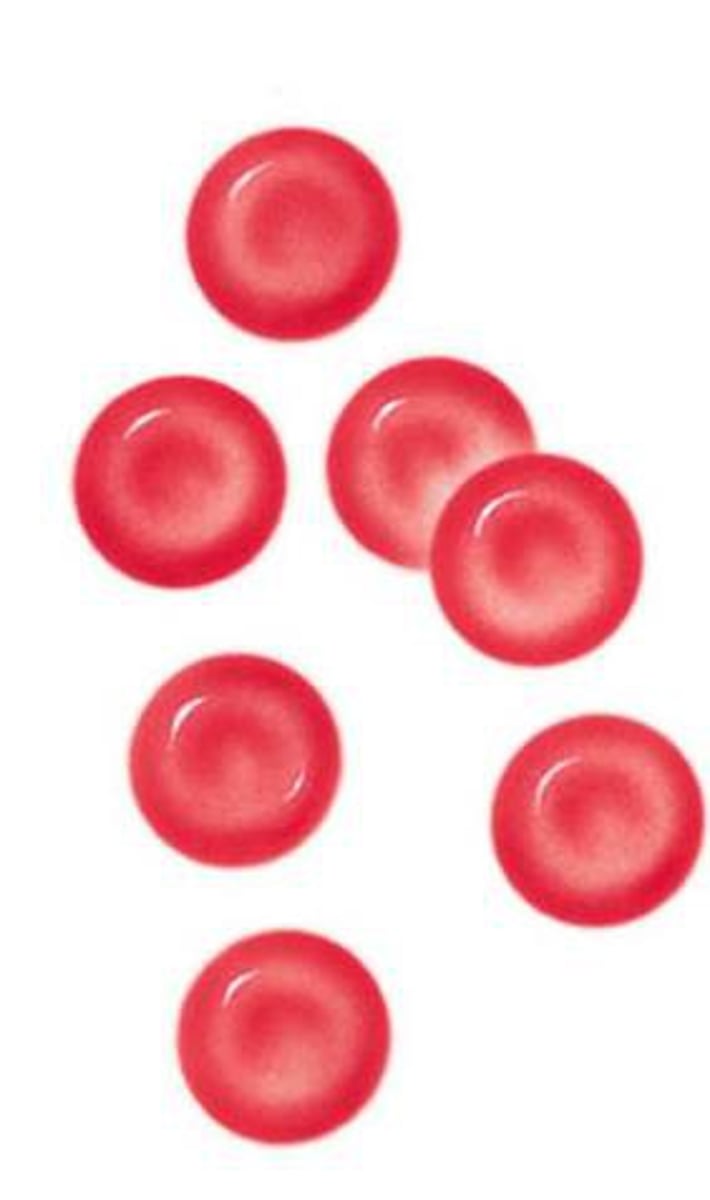
Erythrocyte Adaptations
The cytoplasm contains lots of haemoglobin
Flattened biconcave shape
No nucleus, mitochondria, Golgi apparatus, or RER
Elastic membrane makes the cell flexible so can squeeze through narrow capillaries
Why do erythrocytes have these adaptations?
A lot of haemoglobin means it can readily bind to oxygen
Flattened biconcave shape increases the SA:V
No organelles present makes more space for haemoglobin molecules for maximum oxygen carrying capacity
Neutrophil Adaptations
Has a multi lobed nucleus, which makes it easier for them to squeeze through small gaps to get to the site of infections
Its granular cytoplasm contains many lysosomes that contain enzymes used to attack pathogens
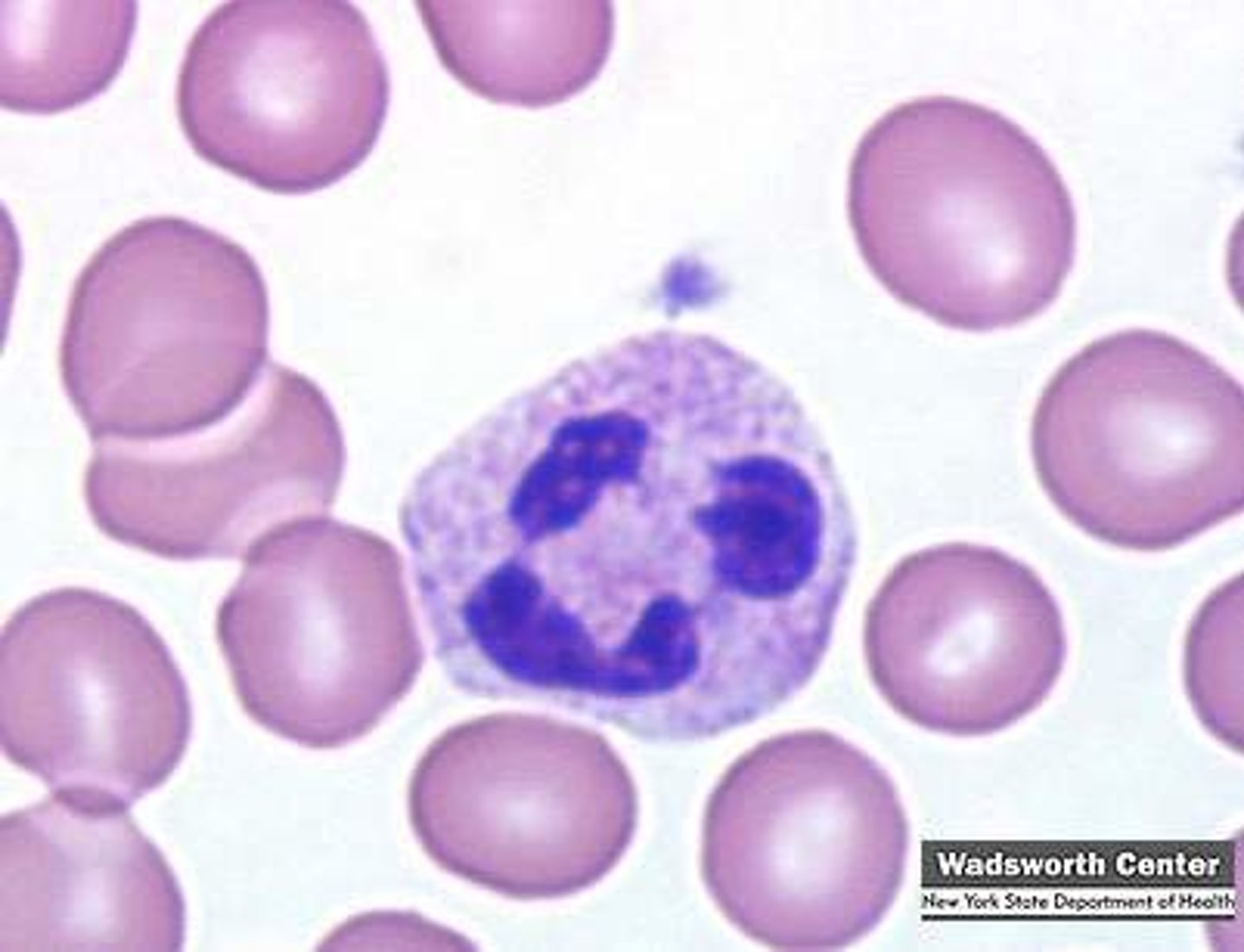
Neutrophil Function
Destroys pathogens by phagocytosis and the secretion of enzymes
Sperm Cell Adaptations
The head contains a nucleus that contains half the normal number of chromosomes
Contains a lot of mitochondria to supply the energy needed to swim
Acrosome on the sperm head contains many digestive enzymes which are released to digest the protective layers around the ovum and allow the sperm to penetrate and fertilise
The mid-piece is packed with mitochondria to release energy (via respiration) for the tail movement
The flagellum tail rotates, propelling the sperm cell forwards and allowing it to move towards the egg
Sperm Cell Function
Reproduction - to fuse with an egg, initiate the development of an embryo and pass on fathers genes
Male gametes
Delivers genetic information to the female gamete
Root Hair Cell Function
Absorption of water and mineral ions from soil
Root Hair Cell Adaptations
Root hairs increase the surface area of the cell. This maximises uptake of water and minerals
Thin walls so that water can move through easily
Permanent vacuole contains cell sap which is more concentrated than soil water, maintaining a water potential gradient
Mitochondria for active transport of mineral ions
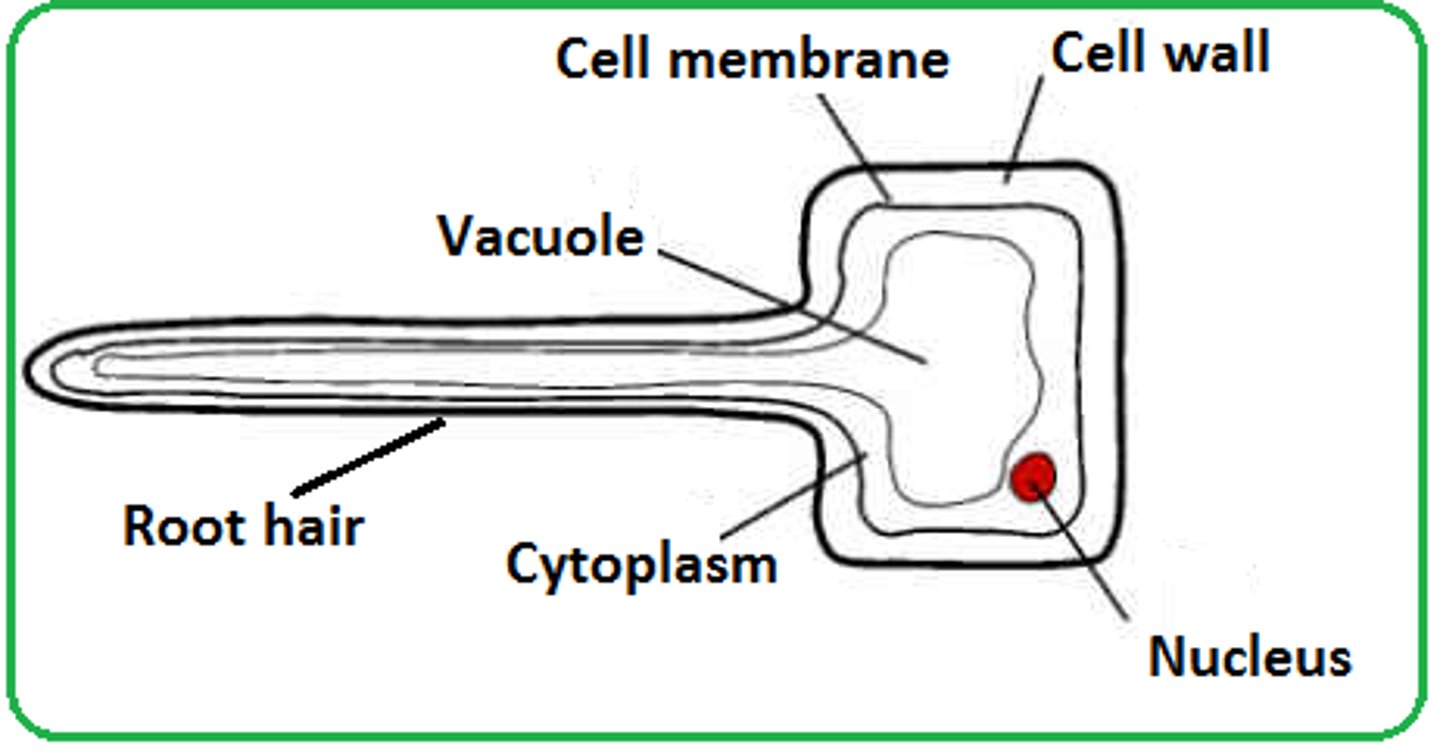
Ciliated Epithelium Function
Moving substances across the surface of a tissue